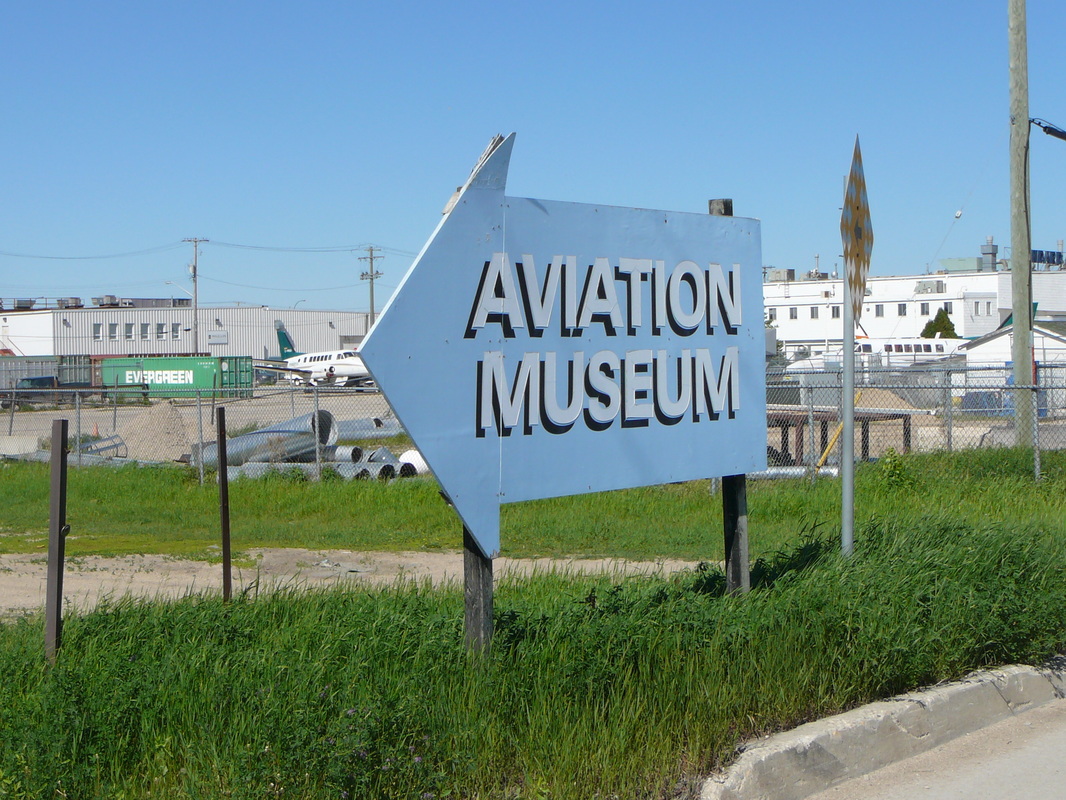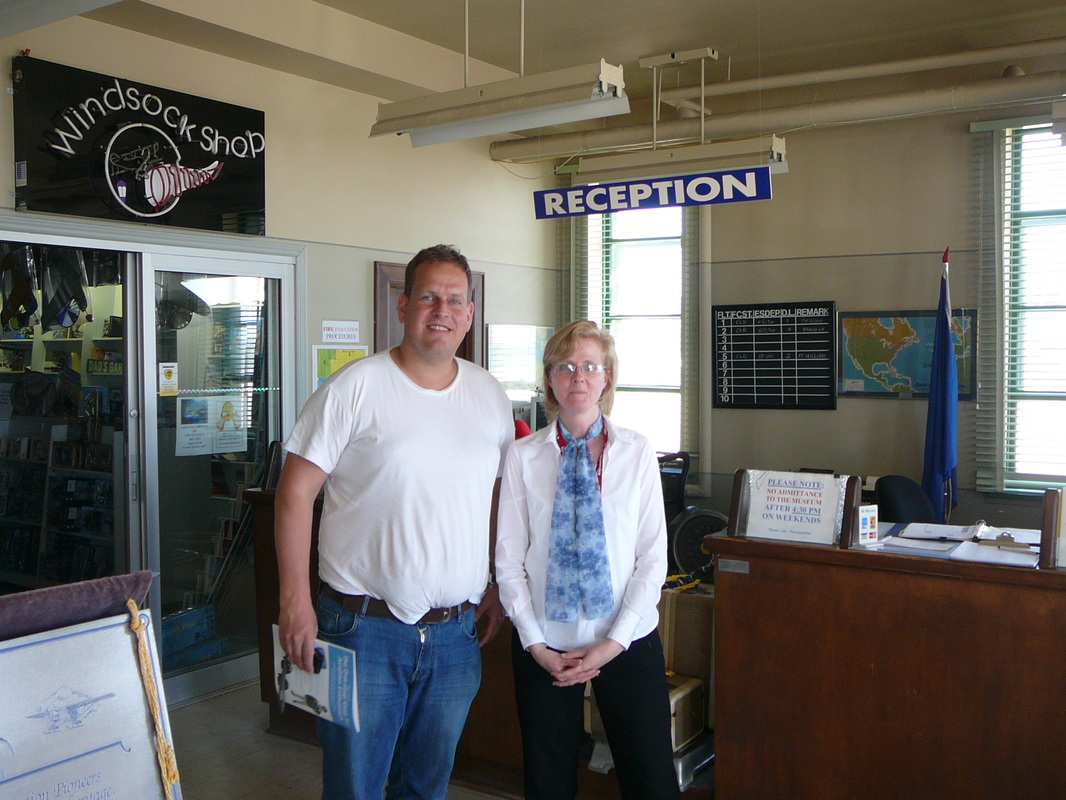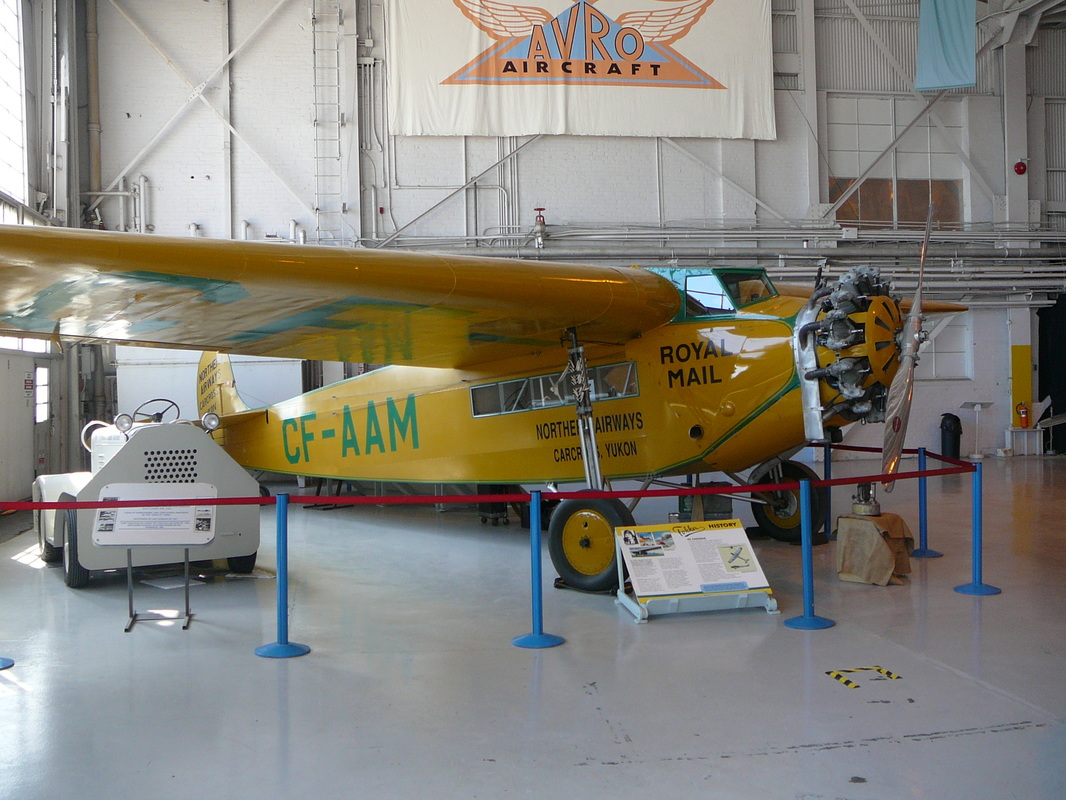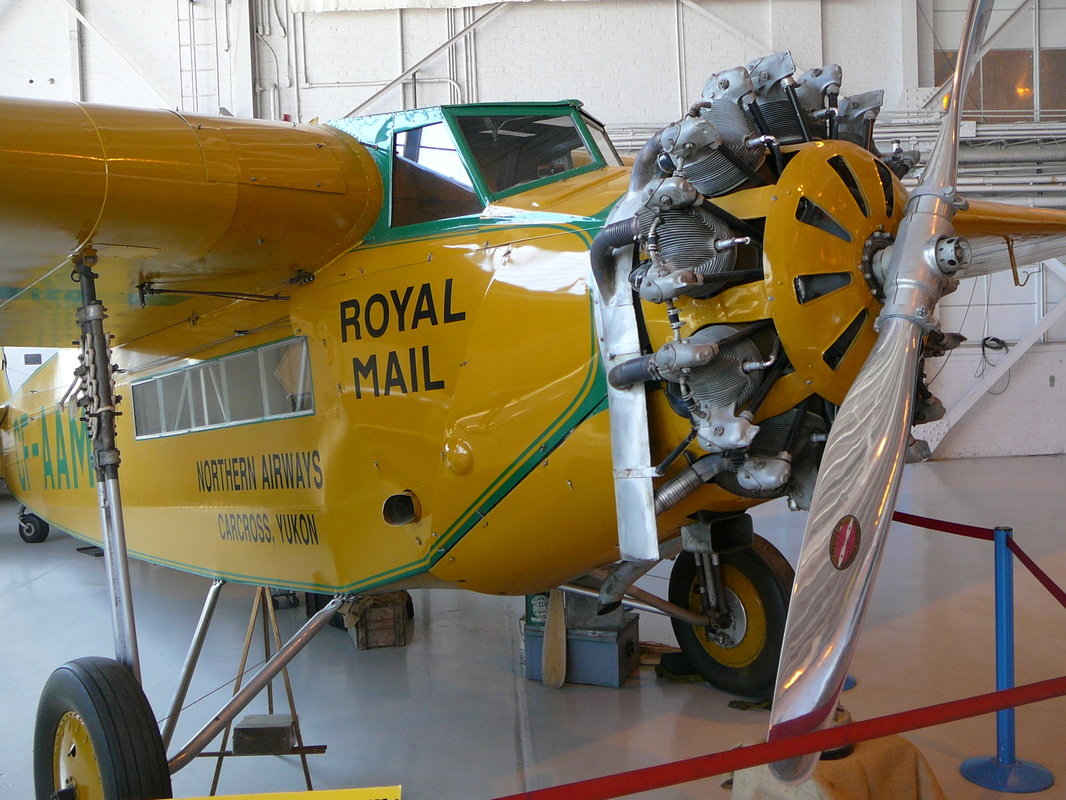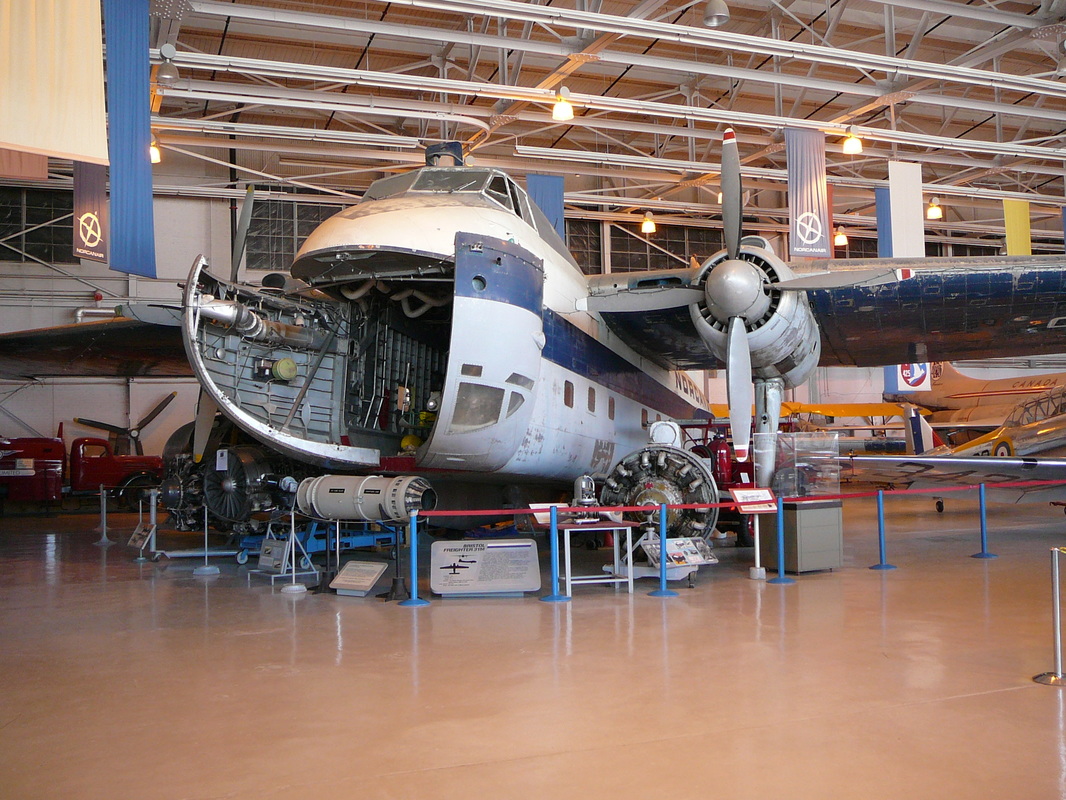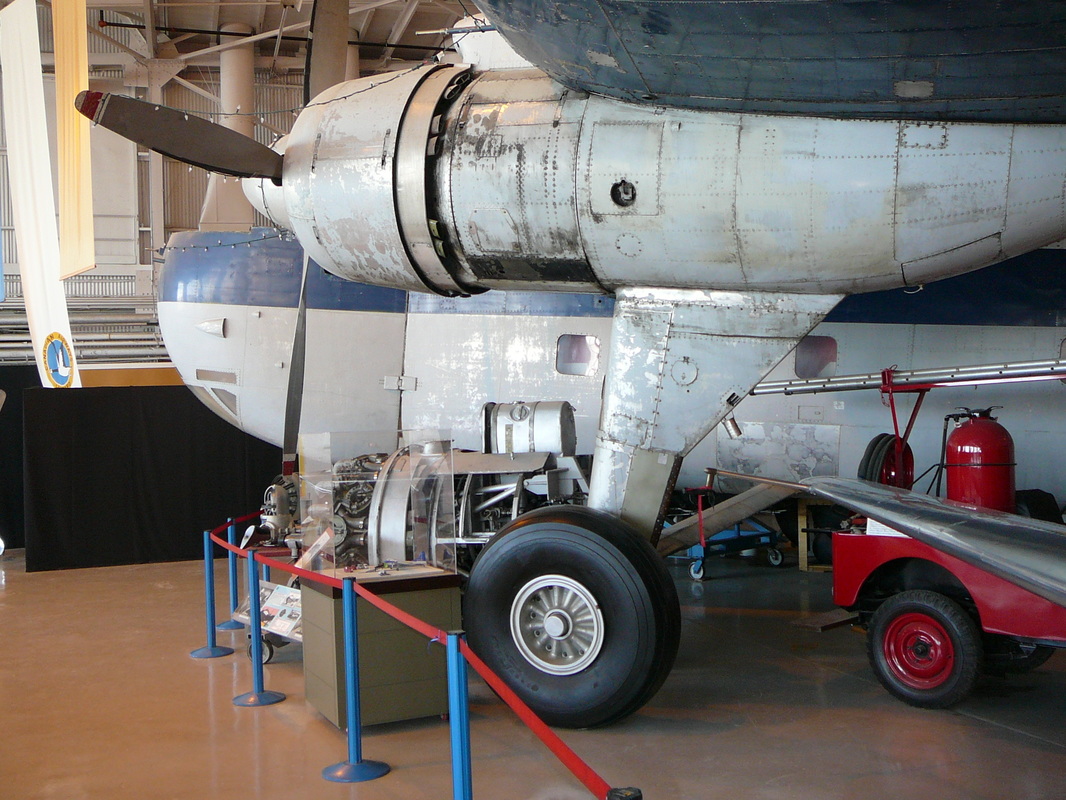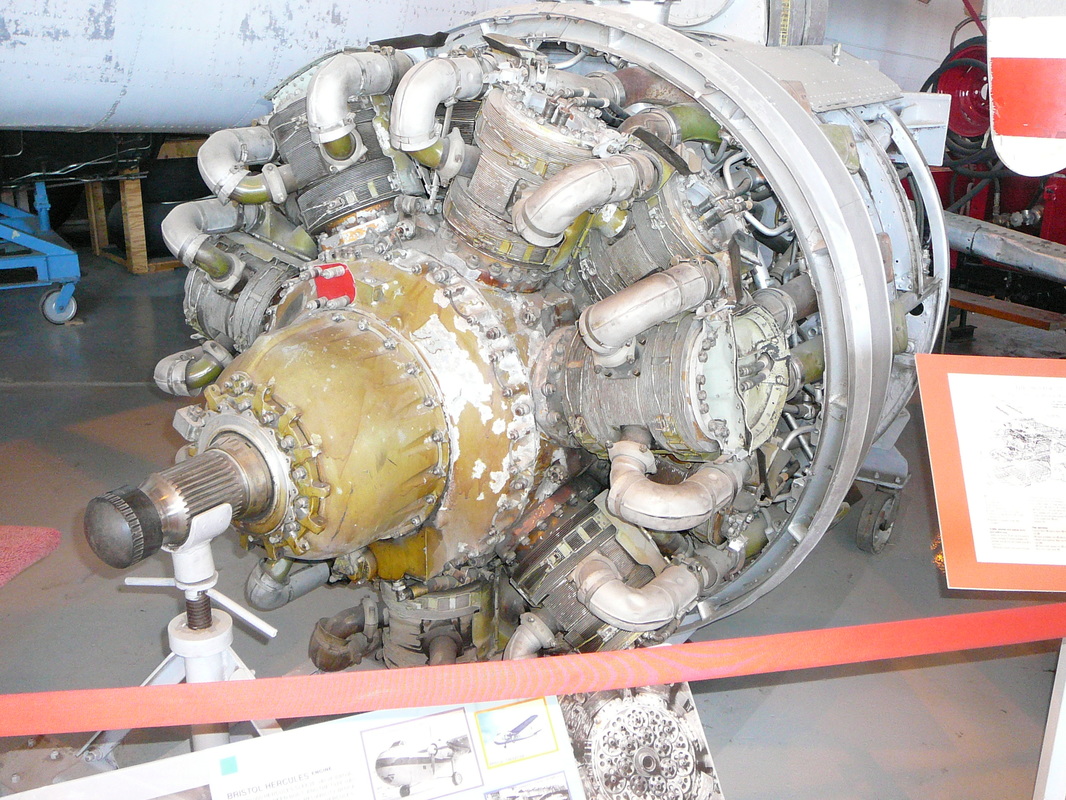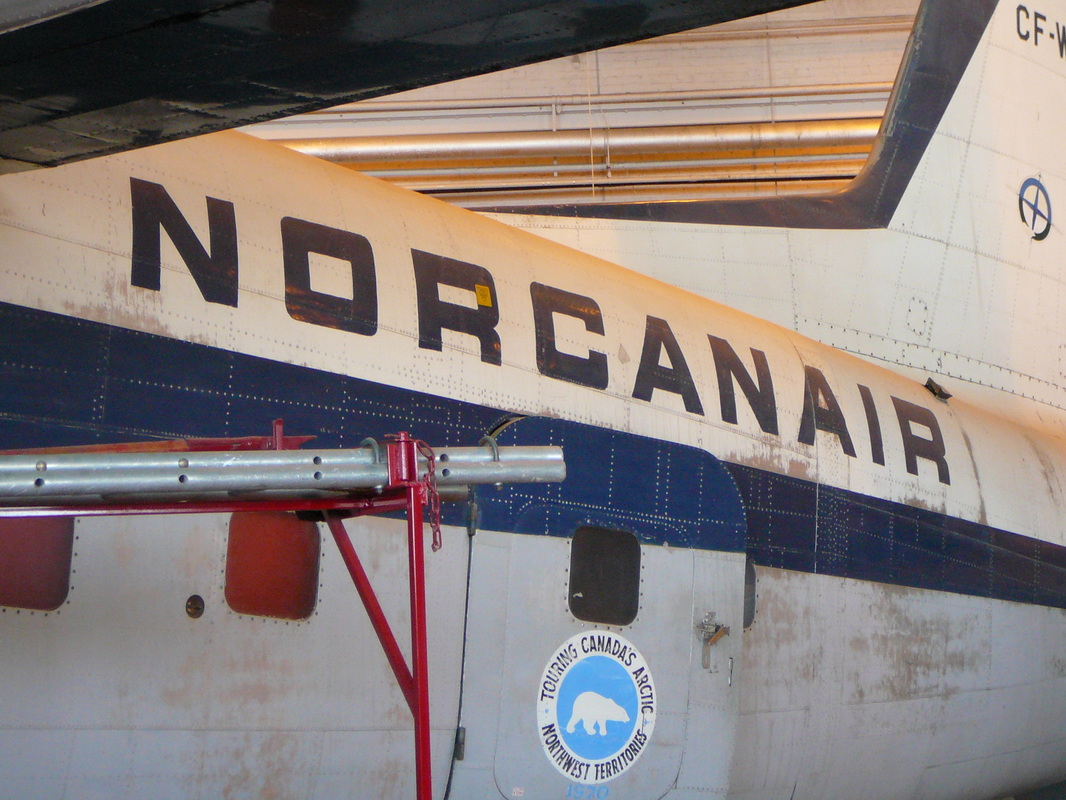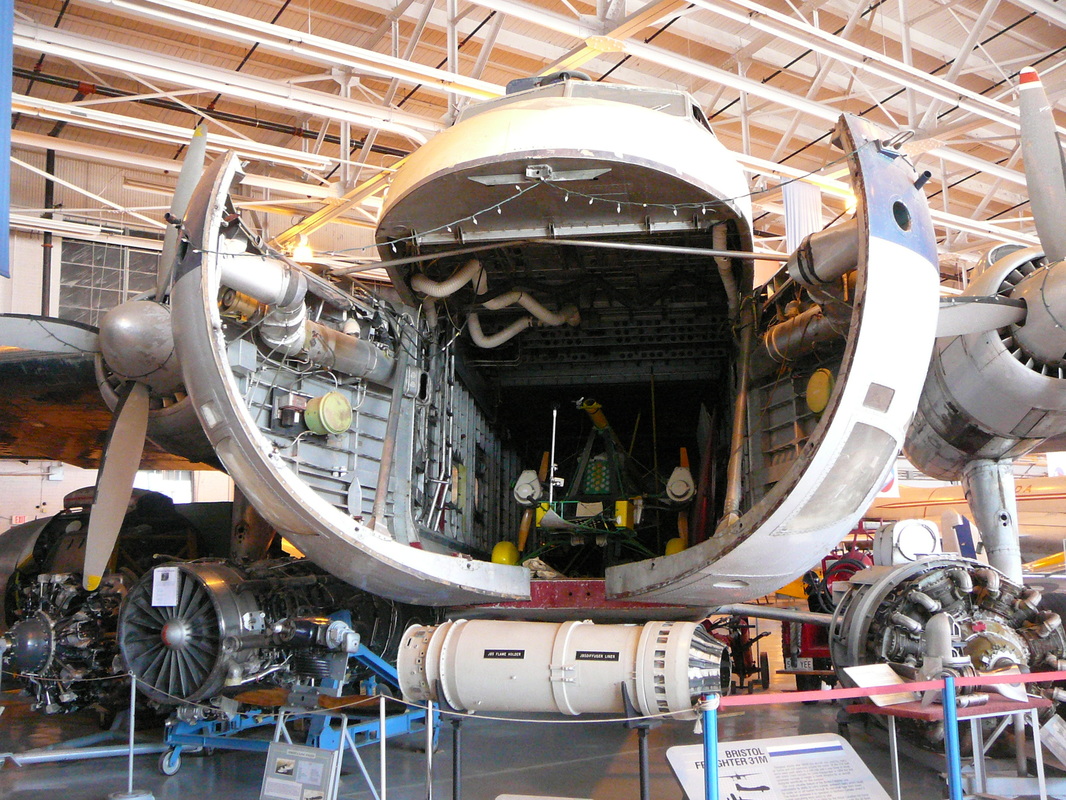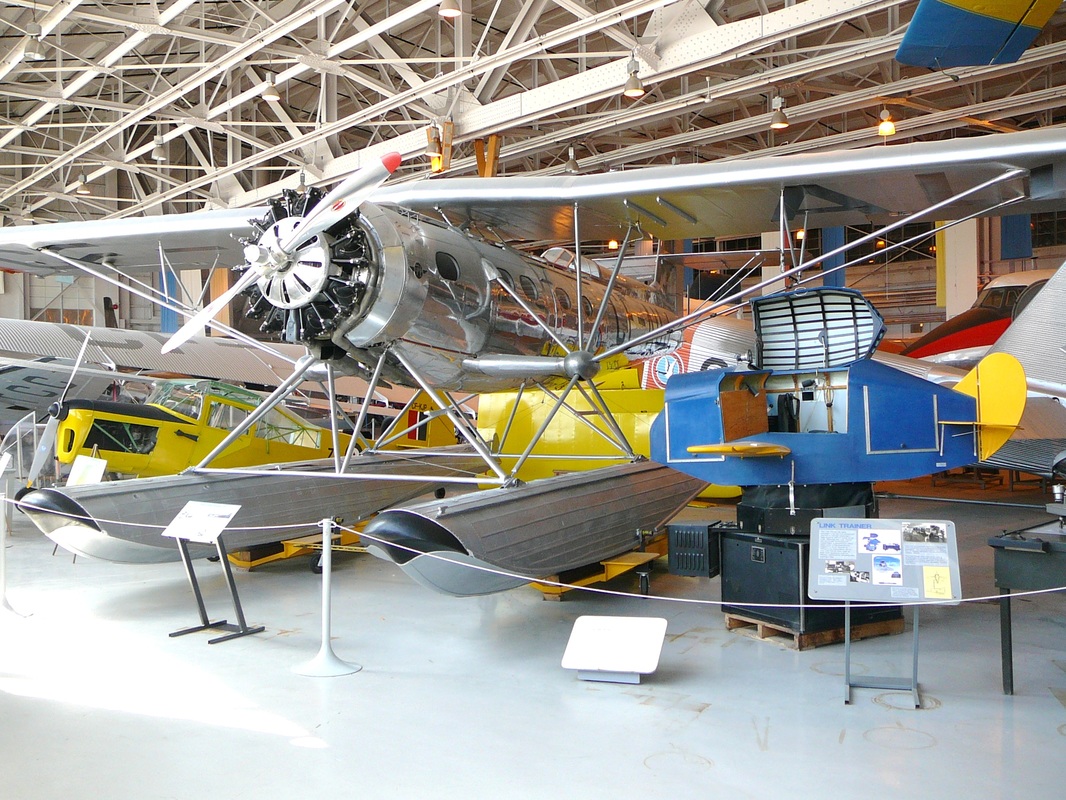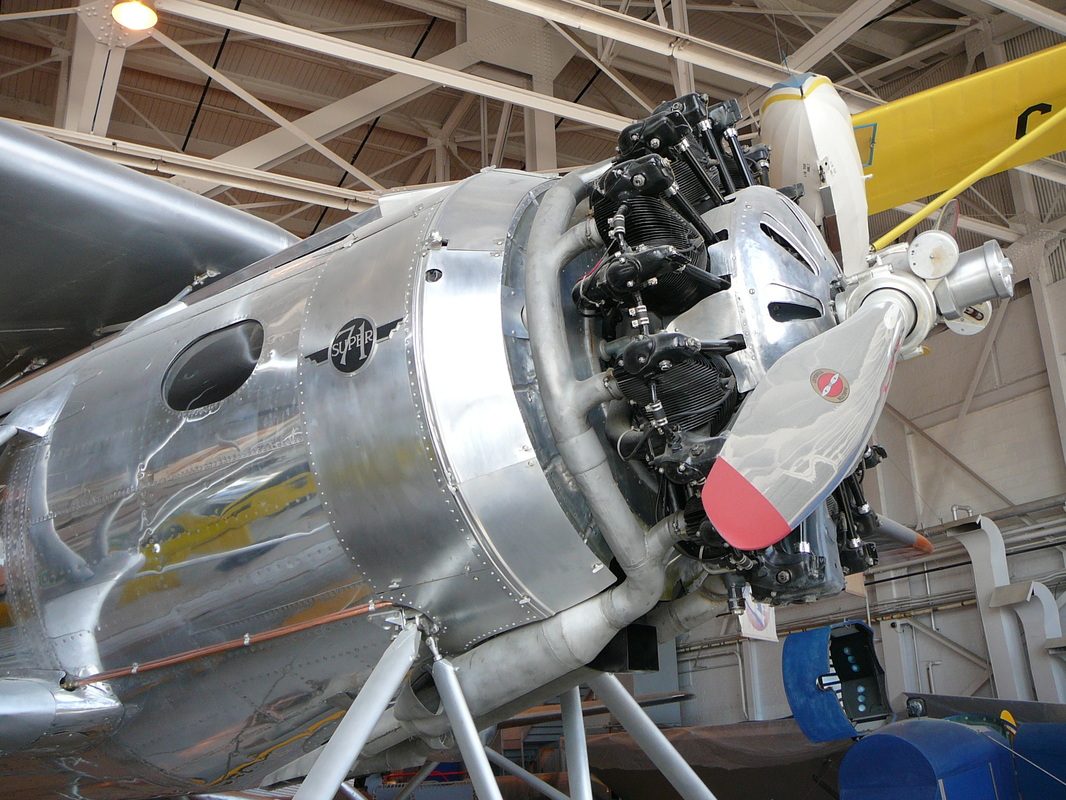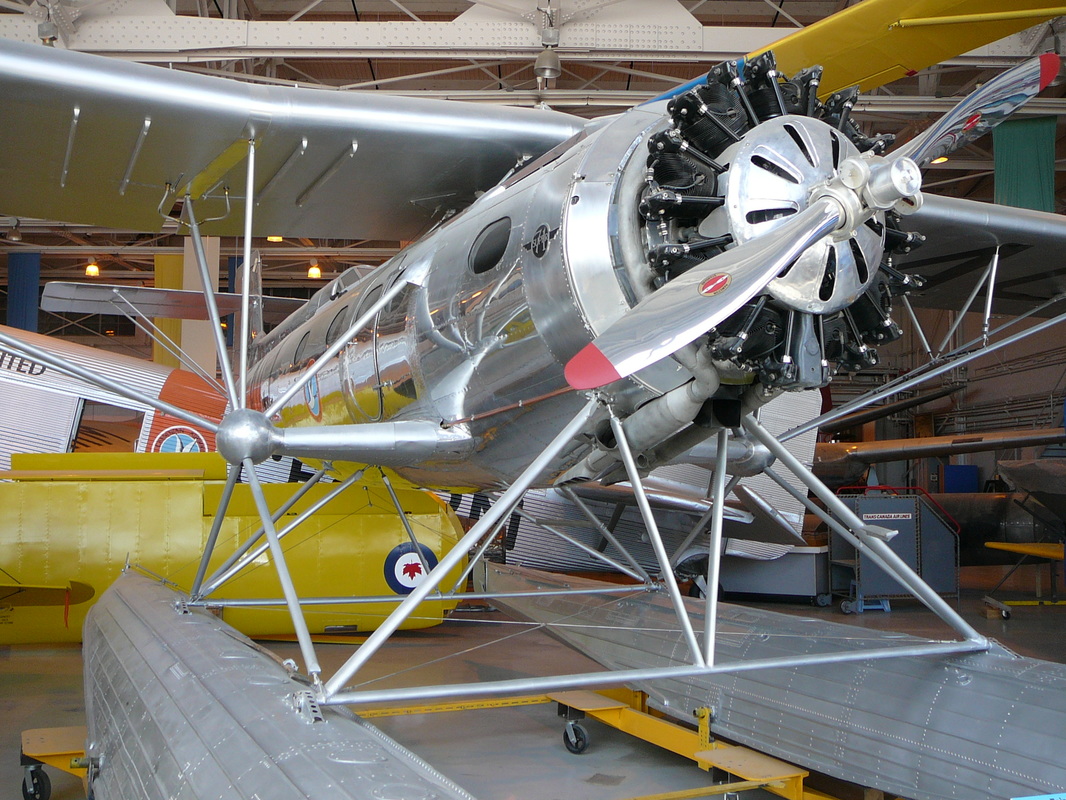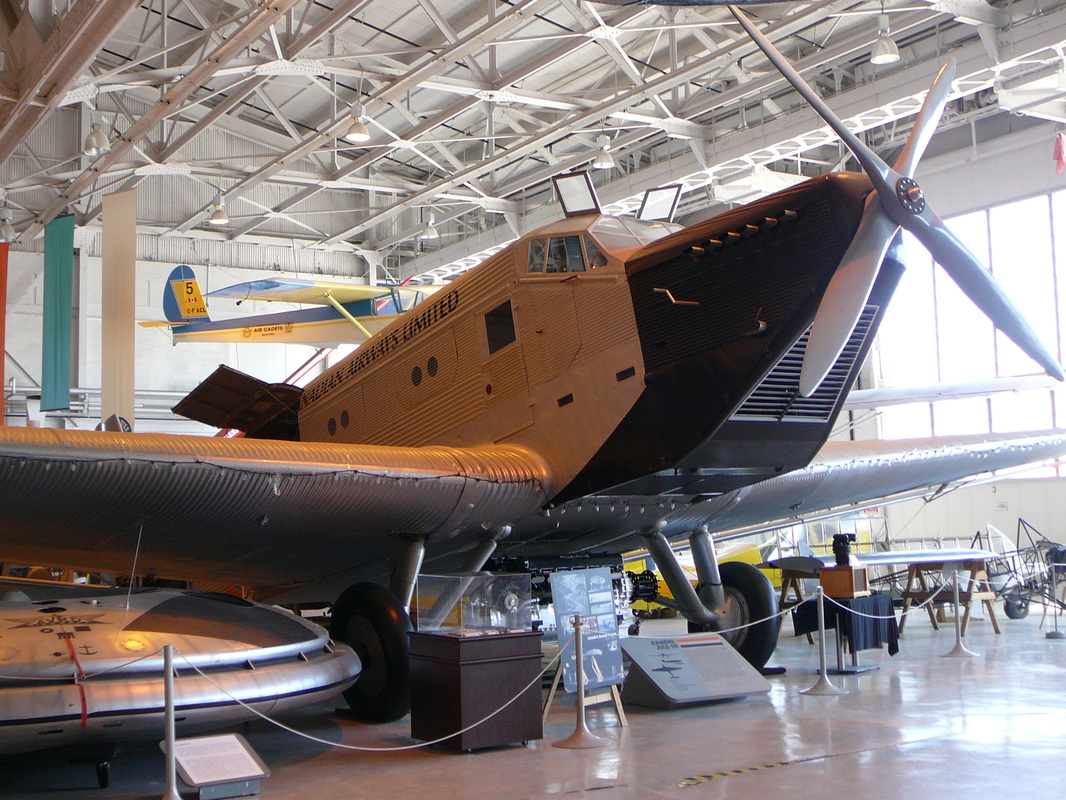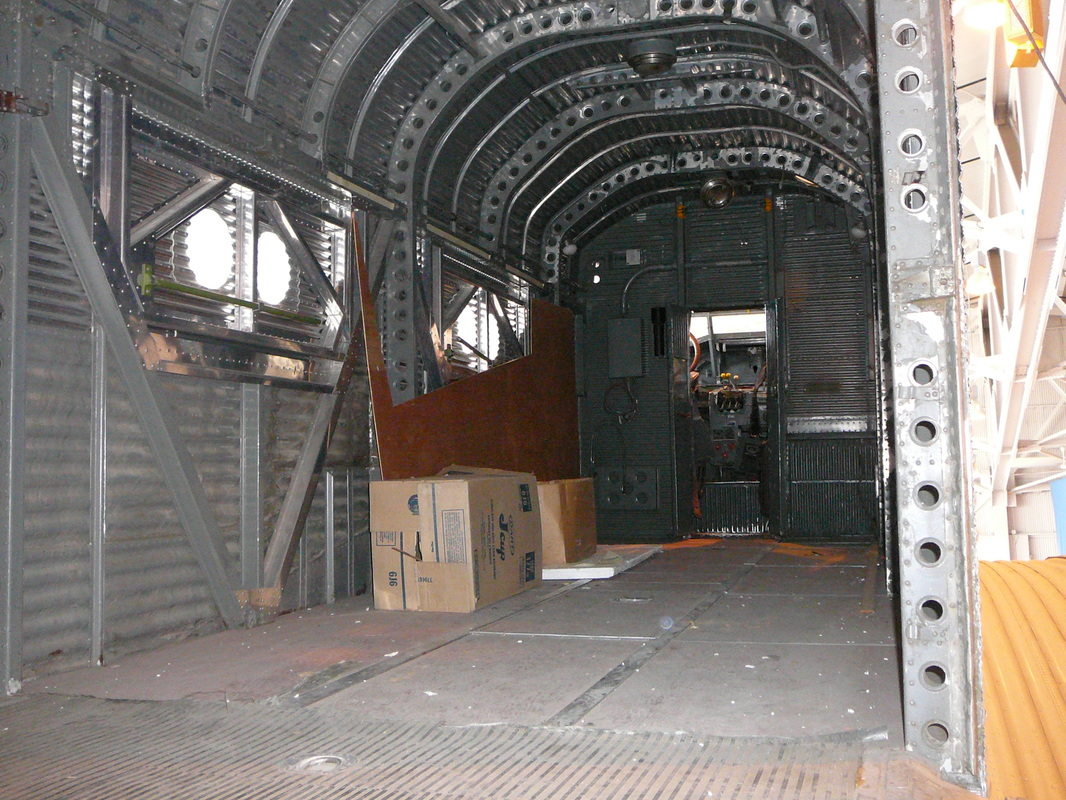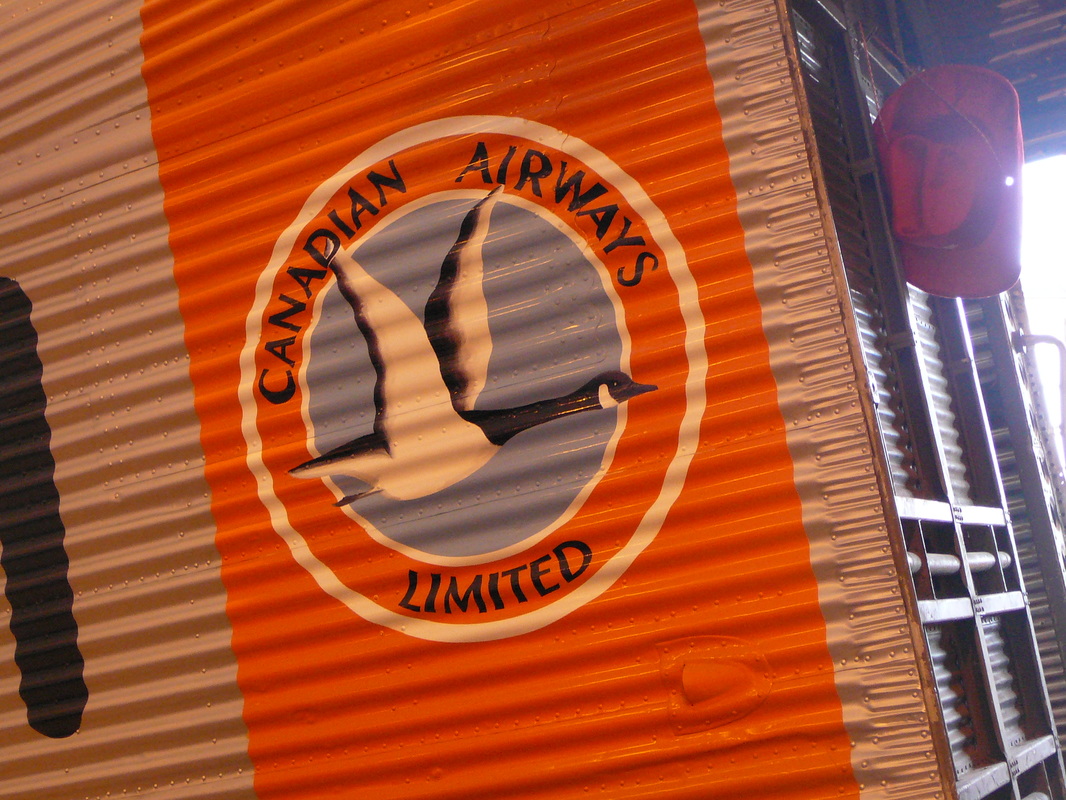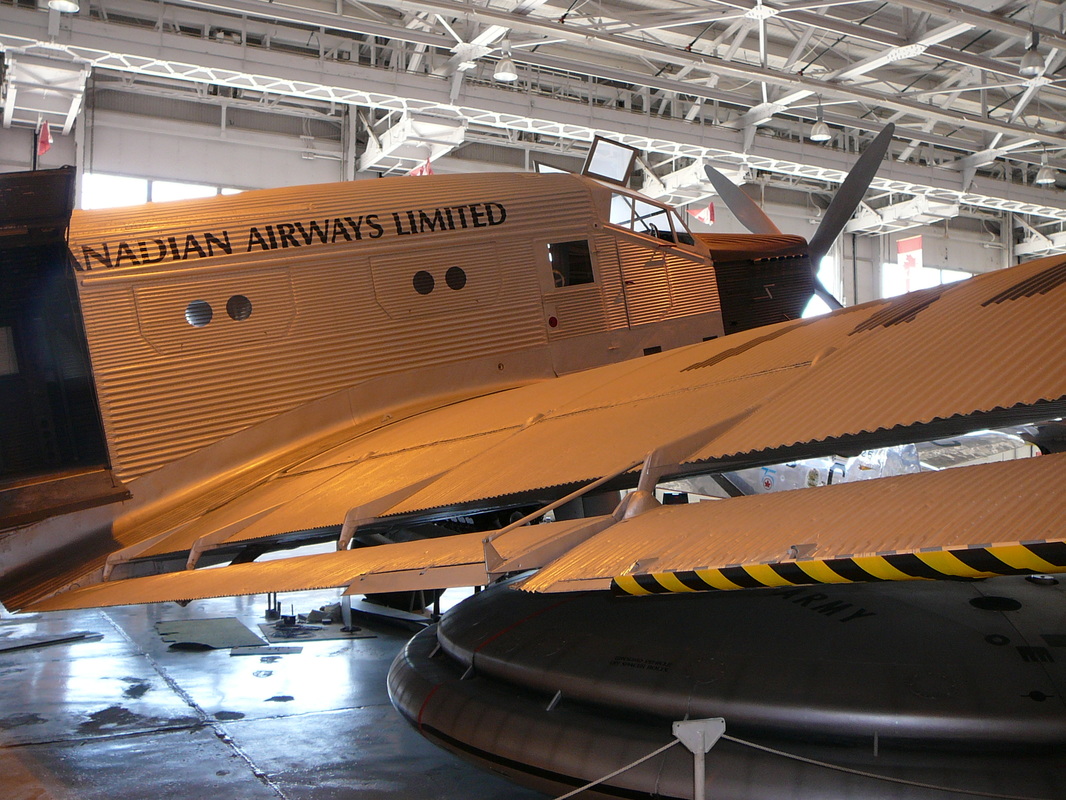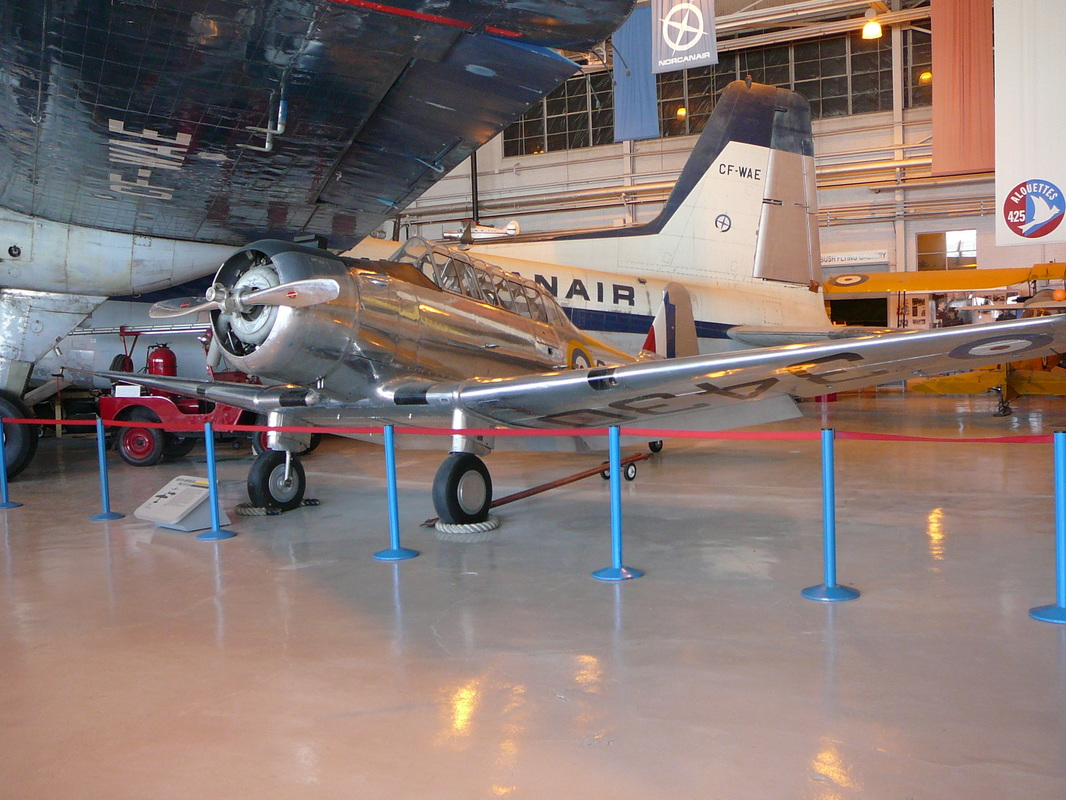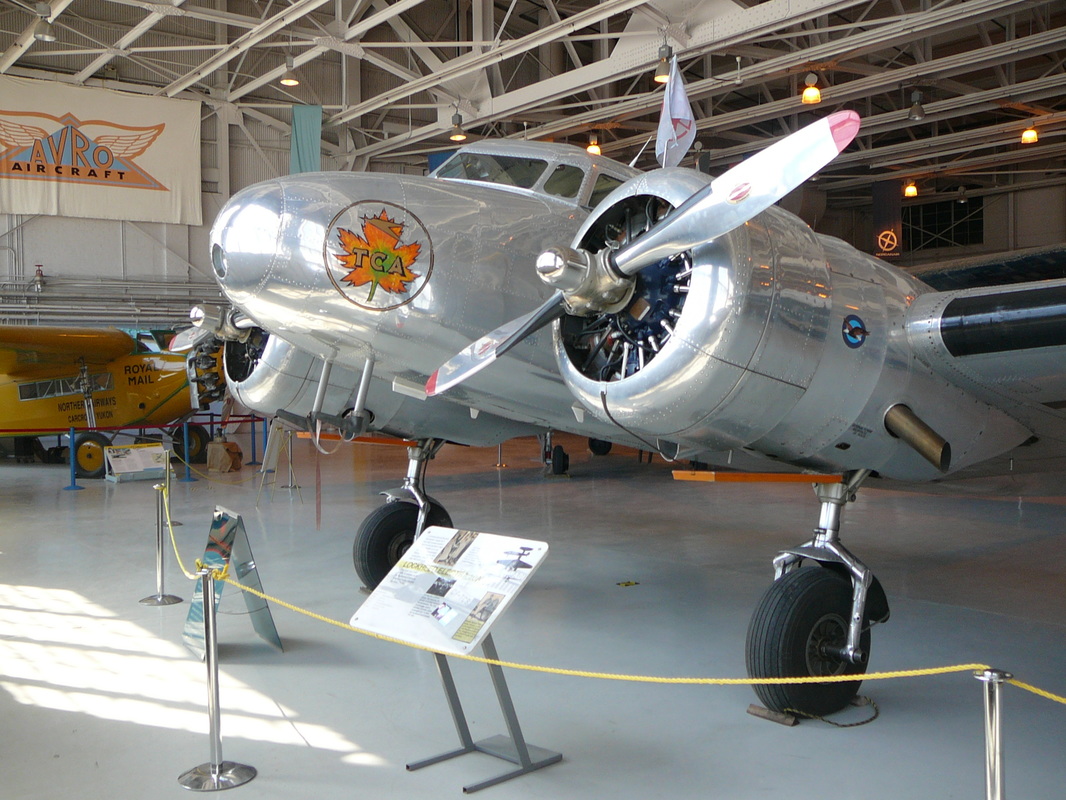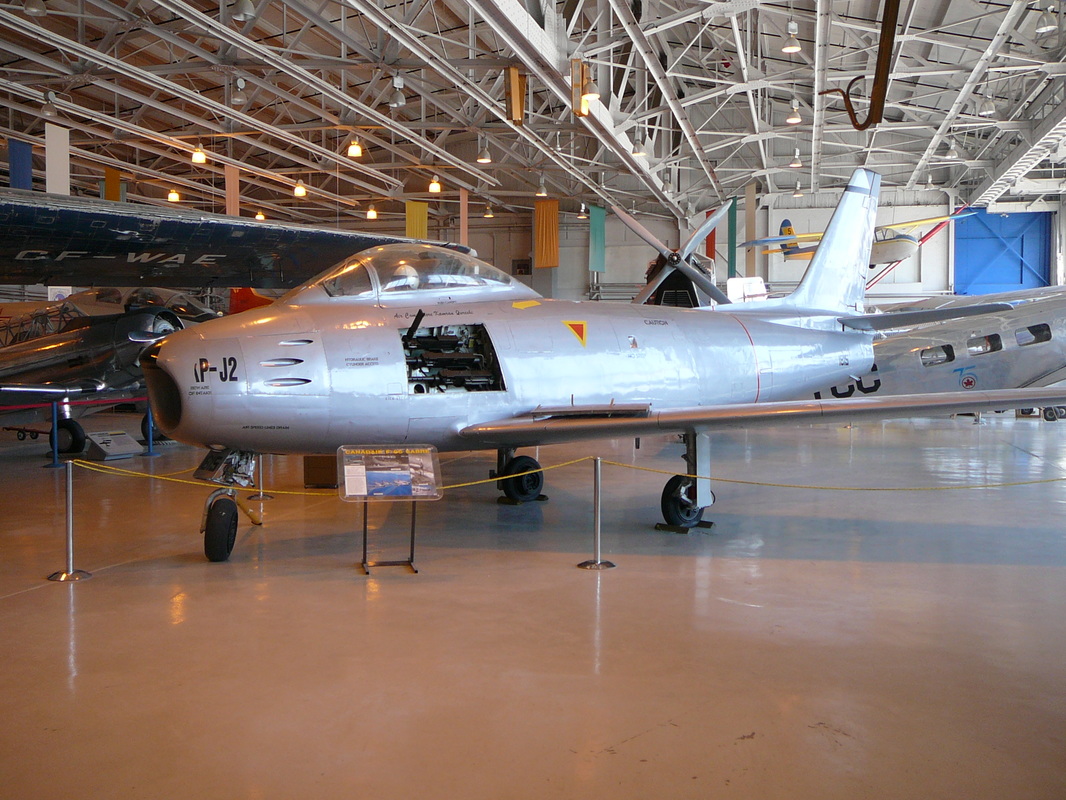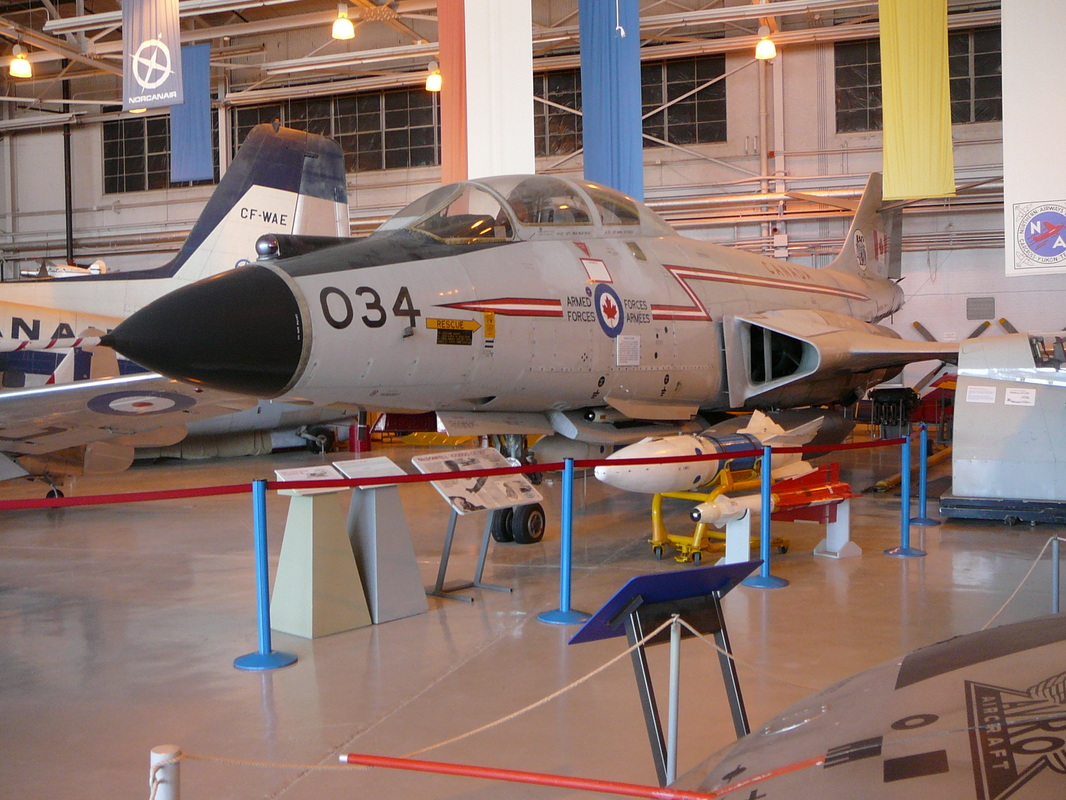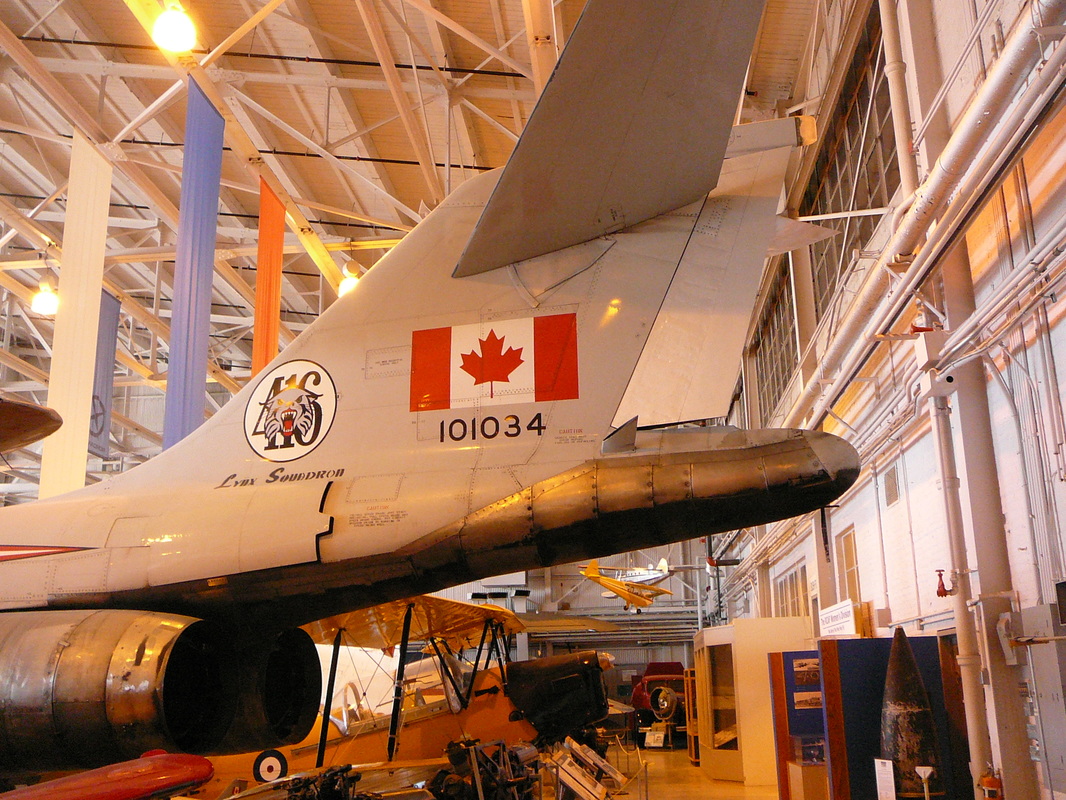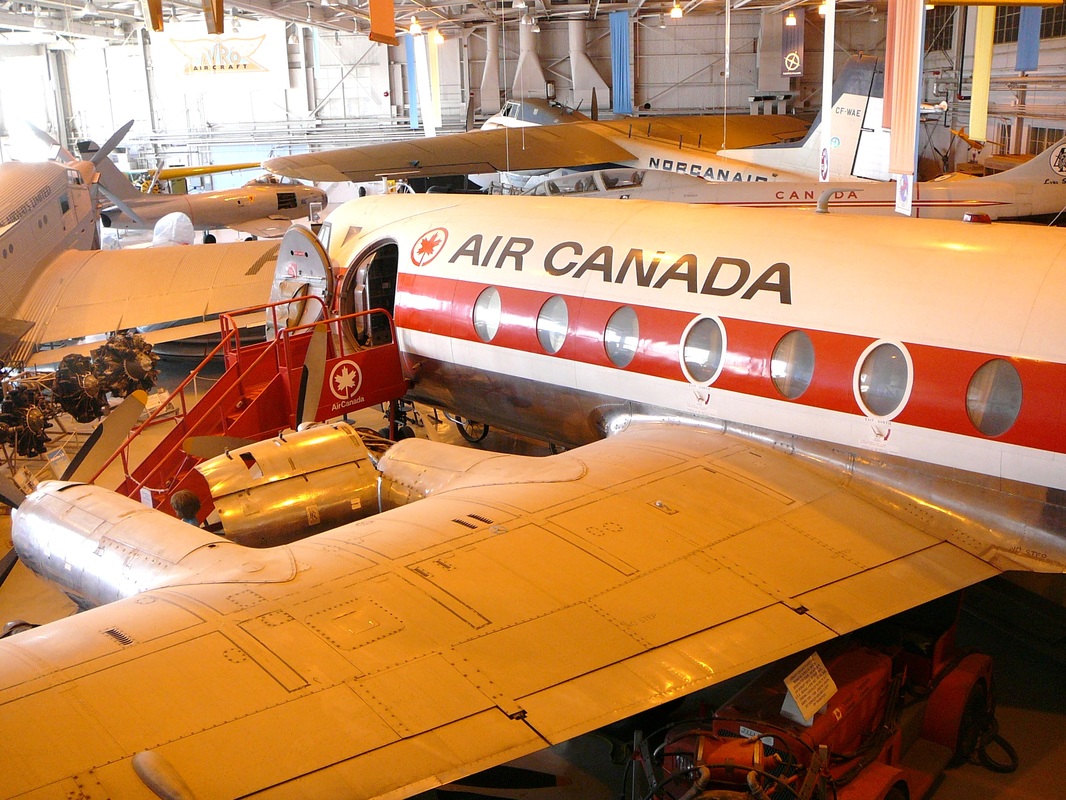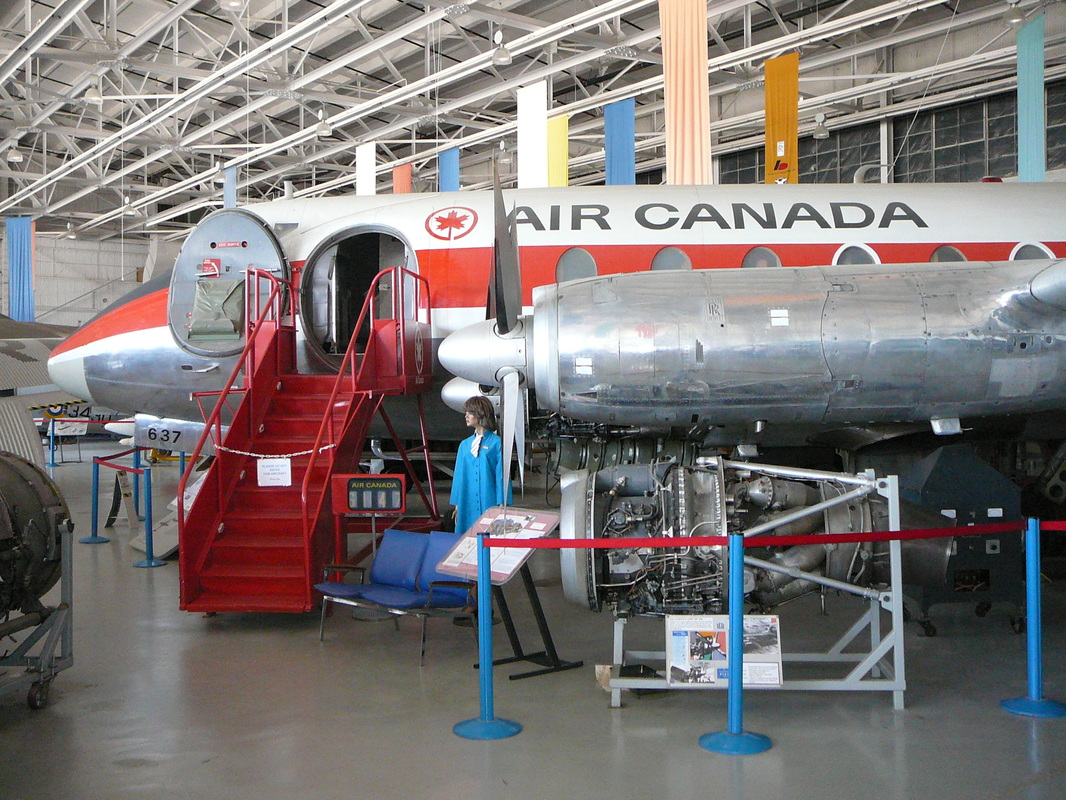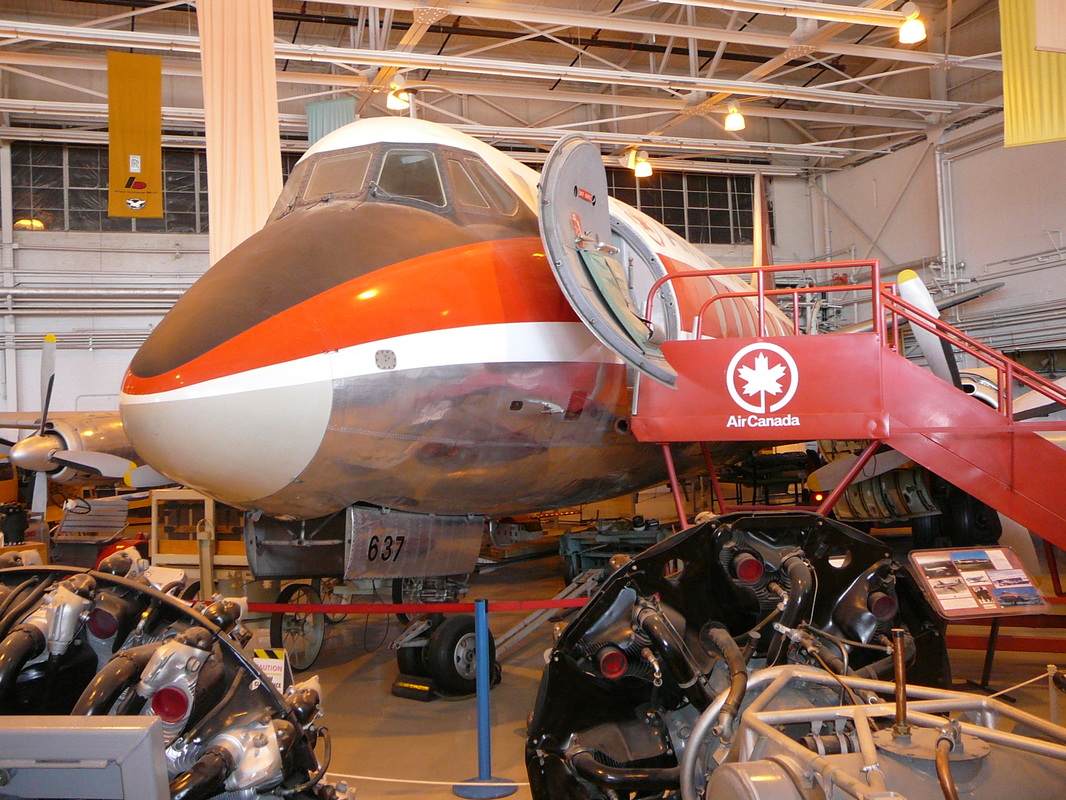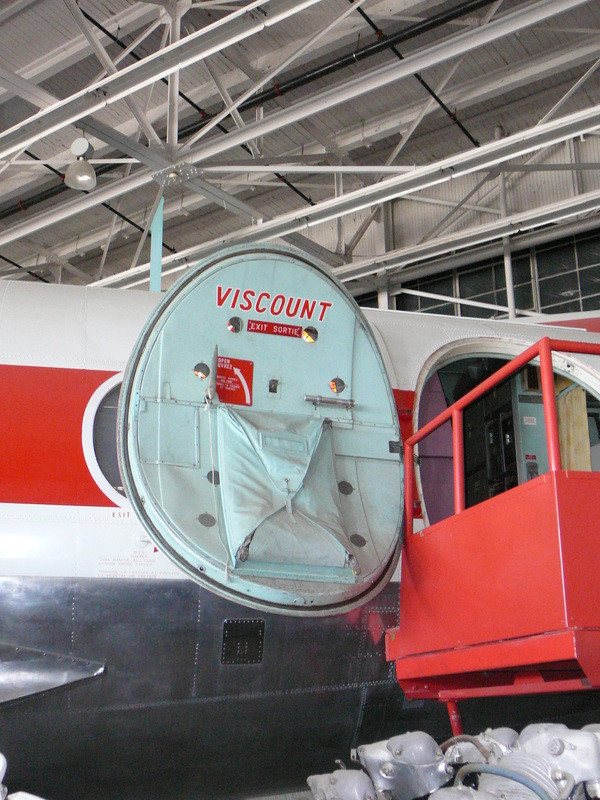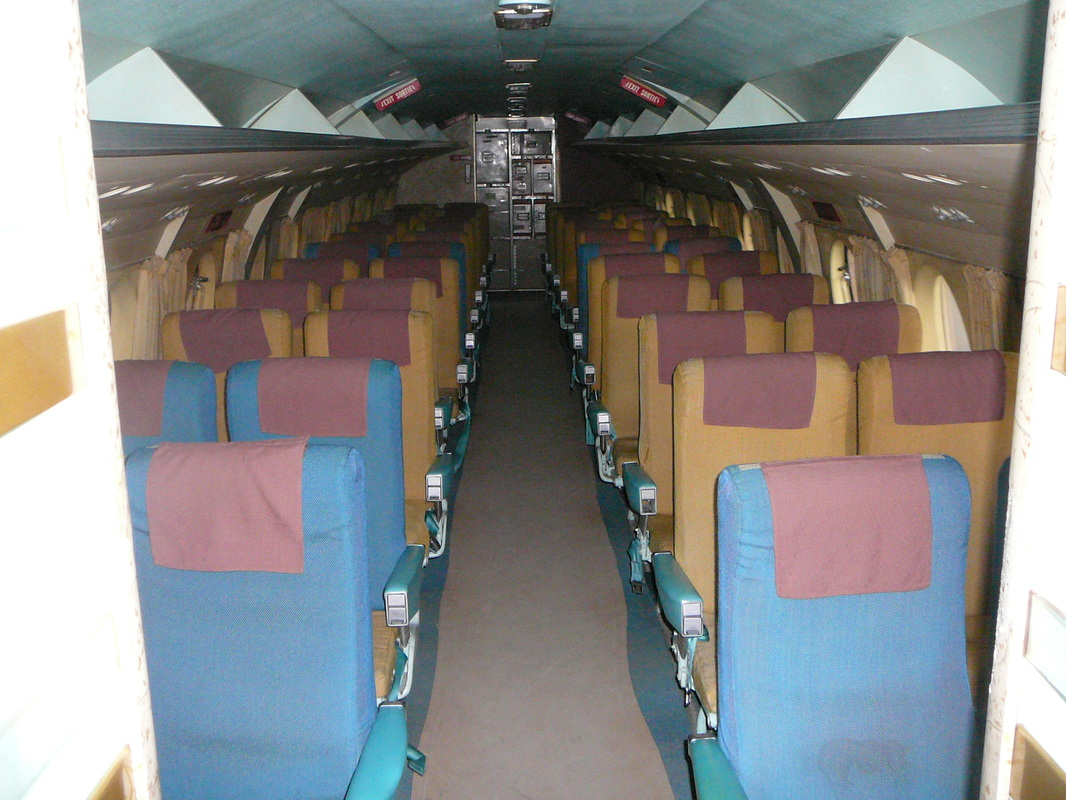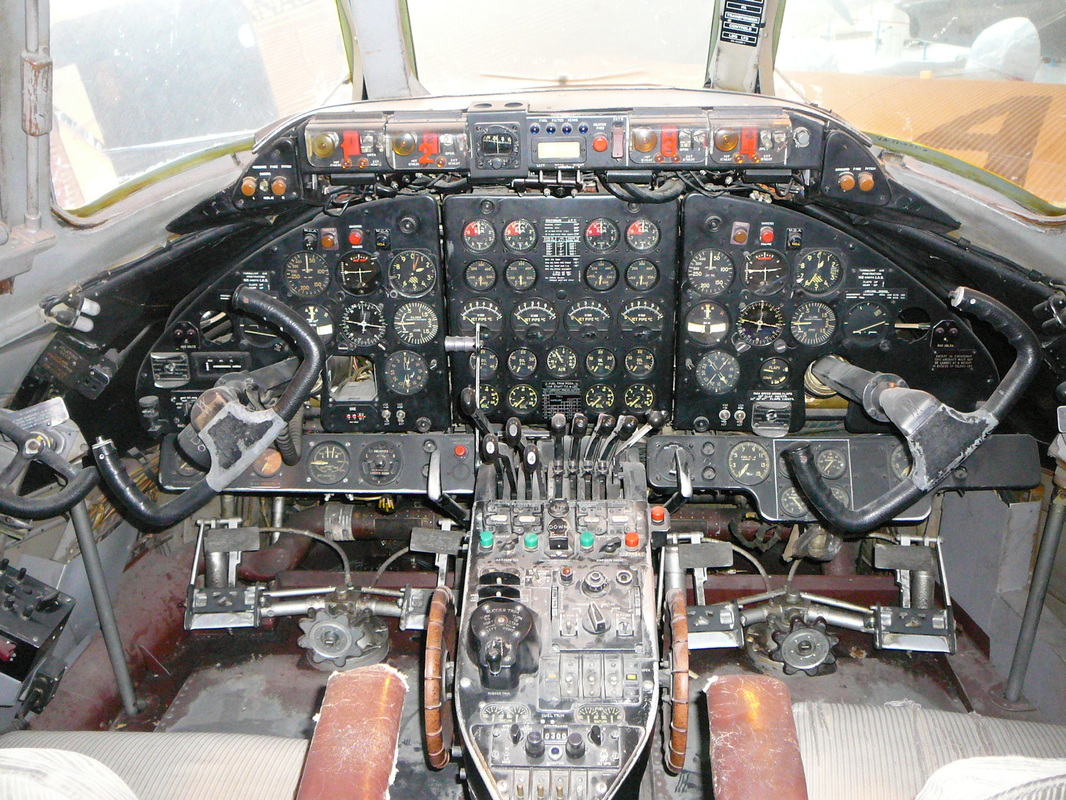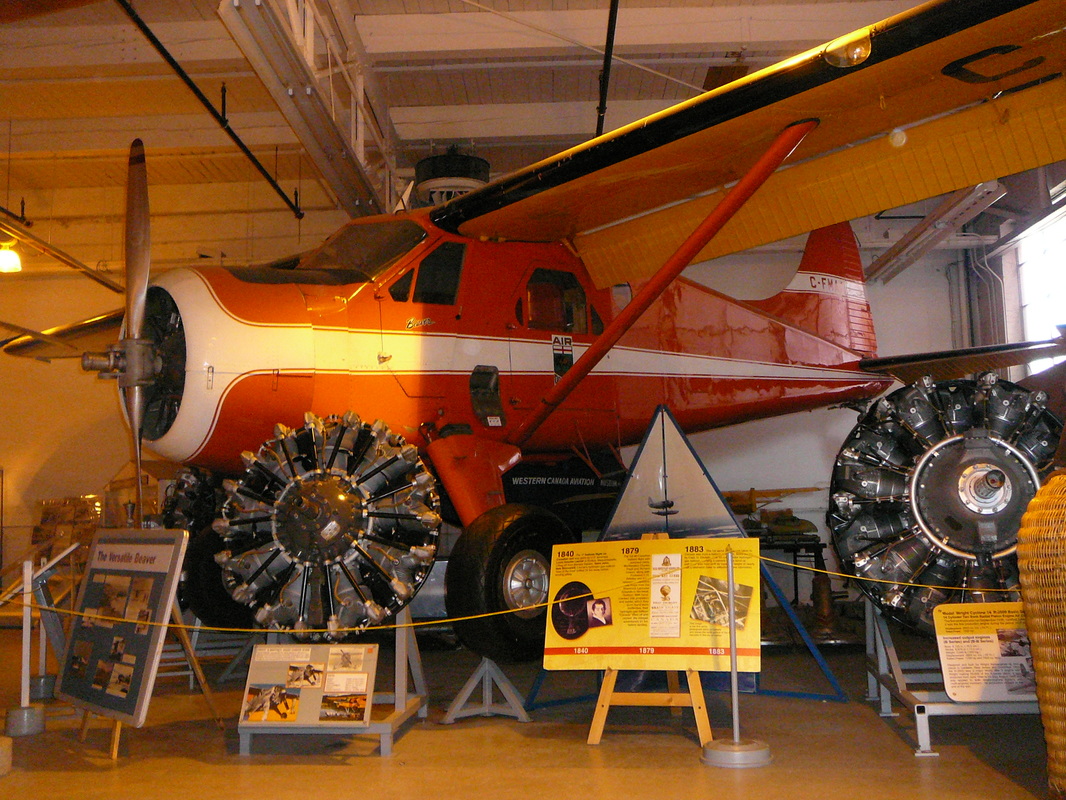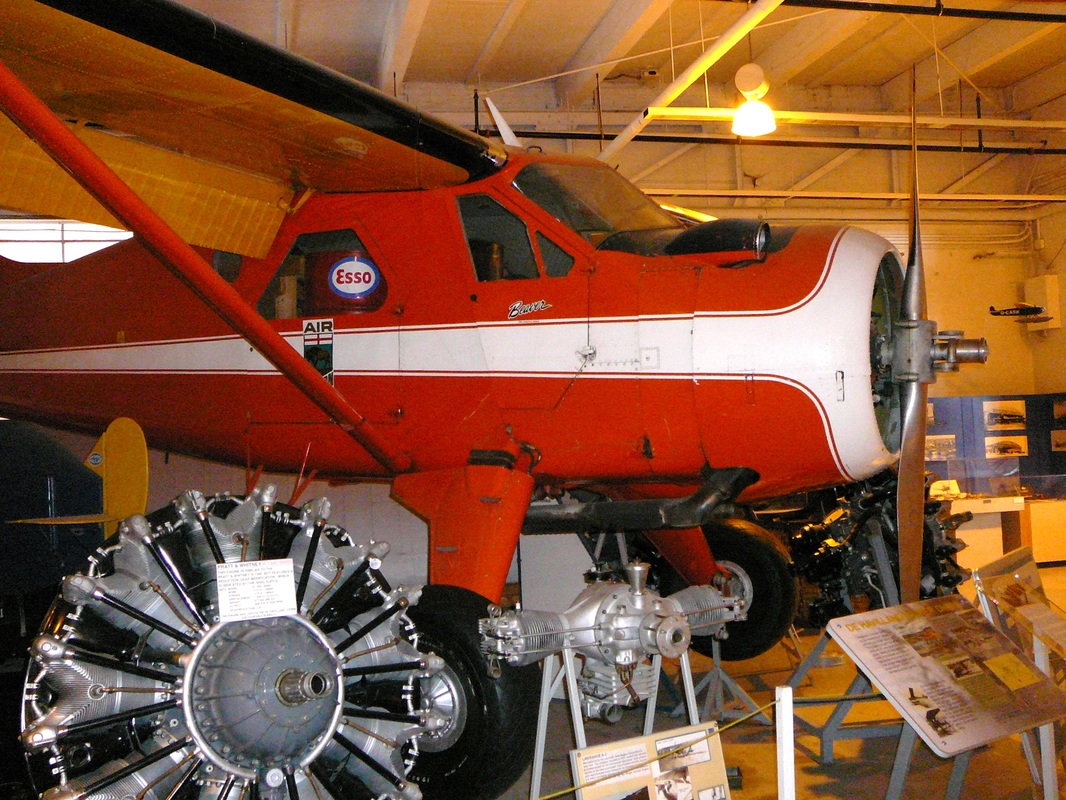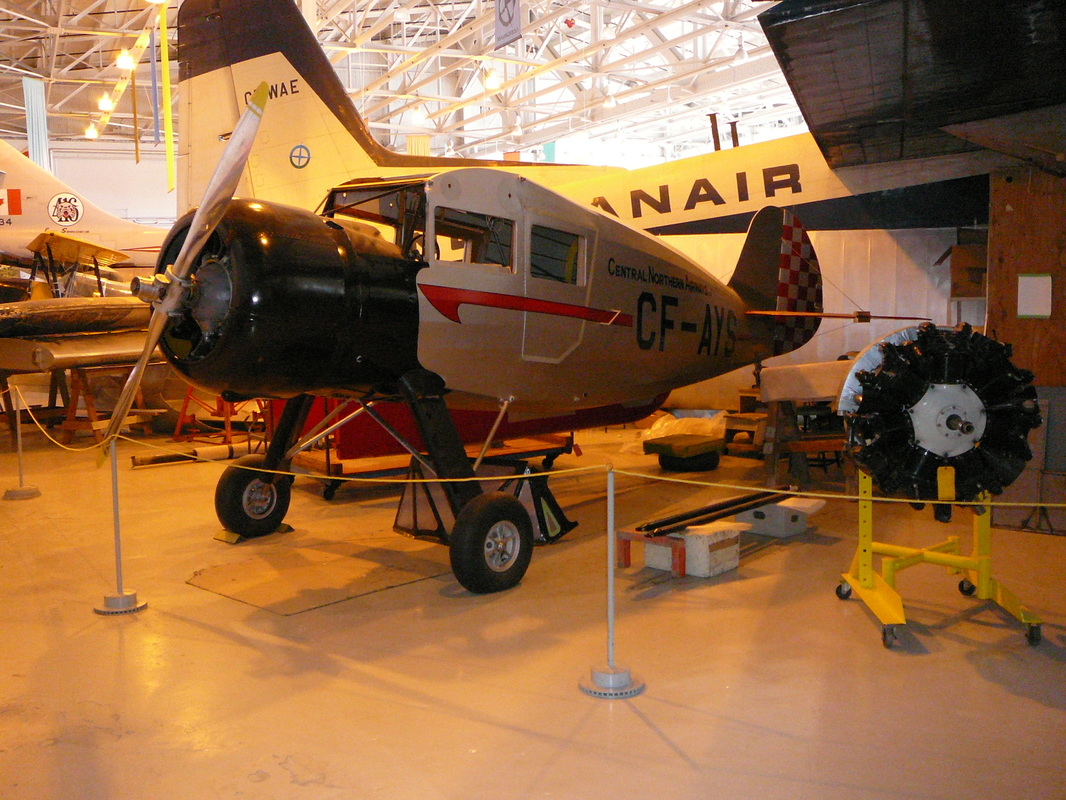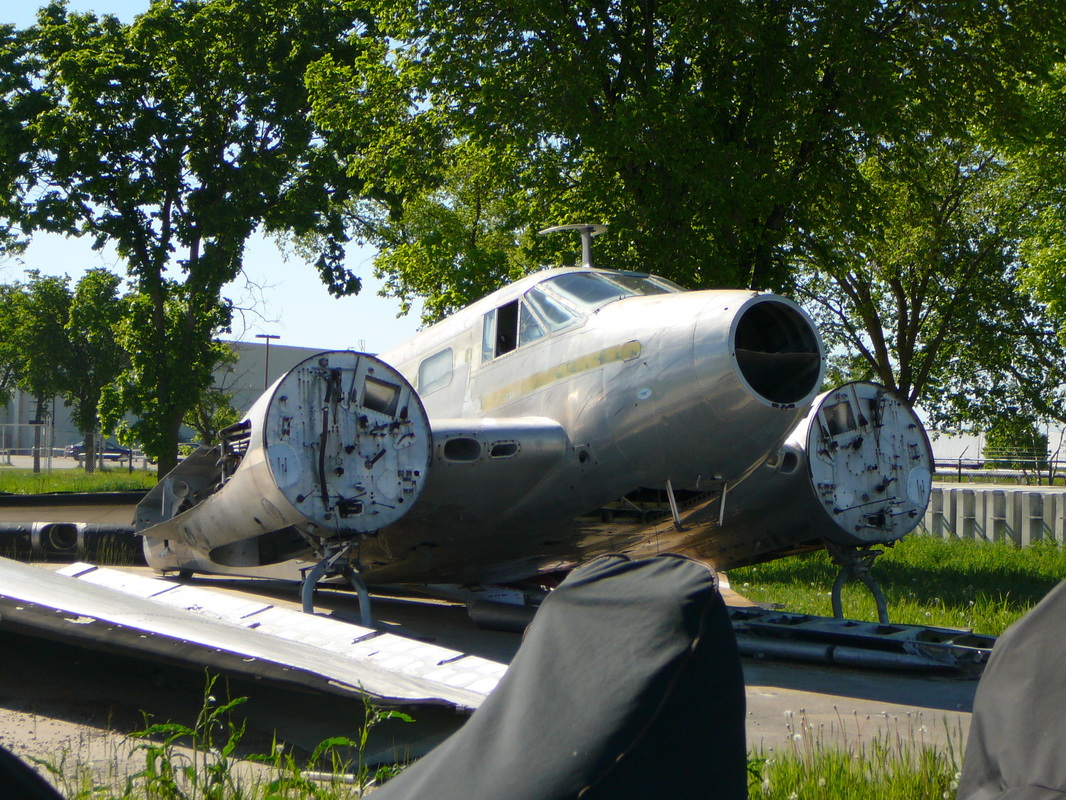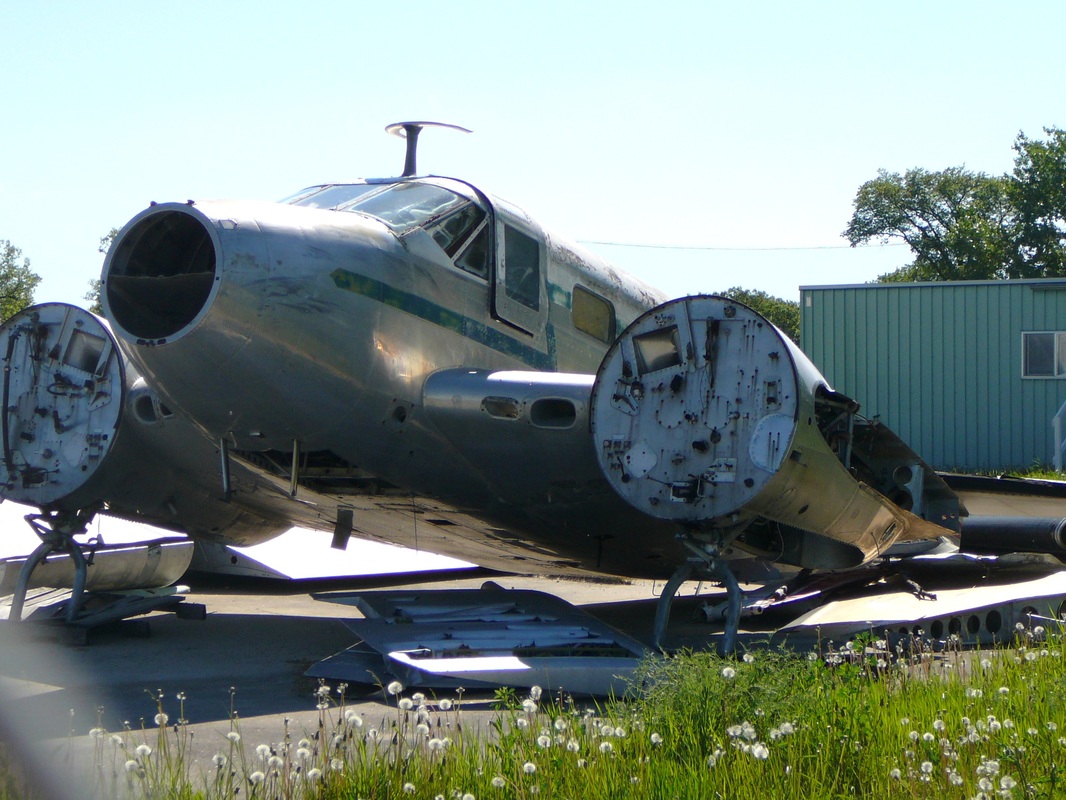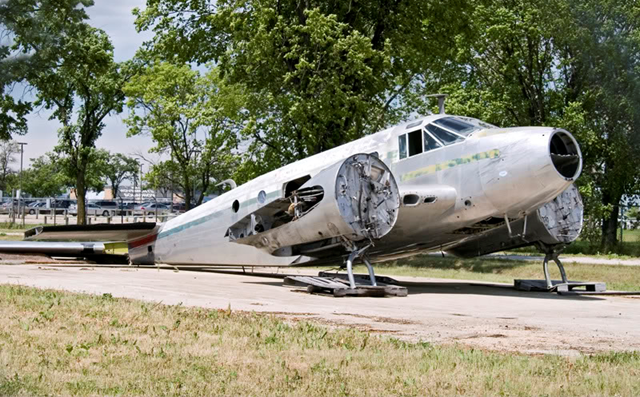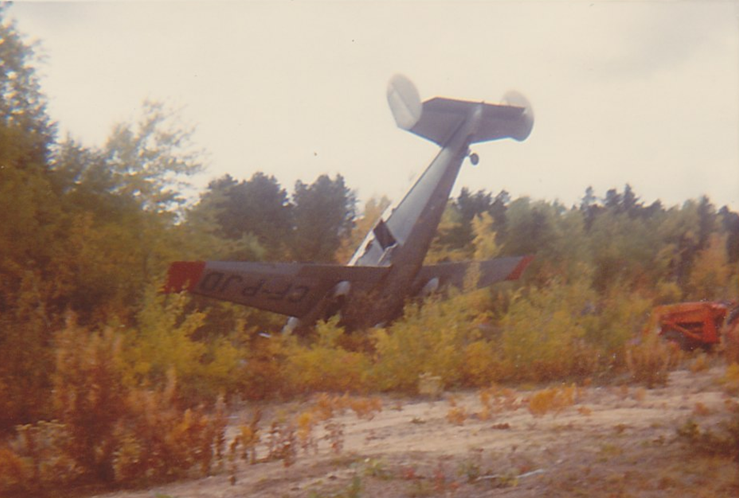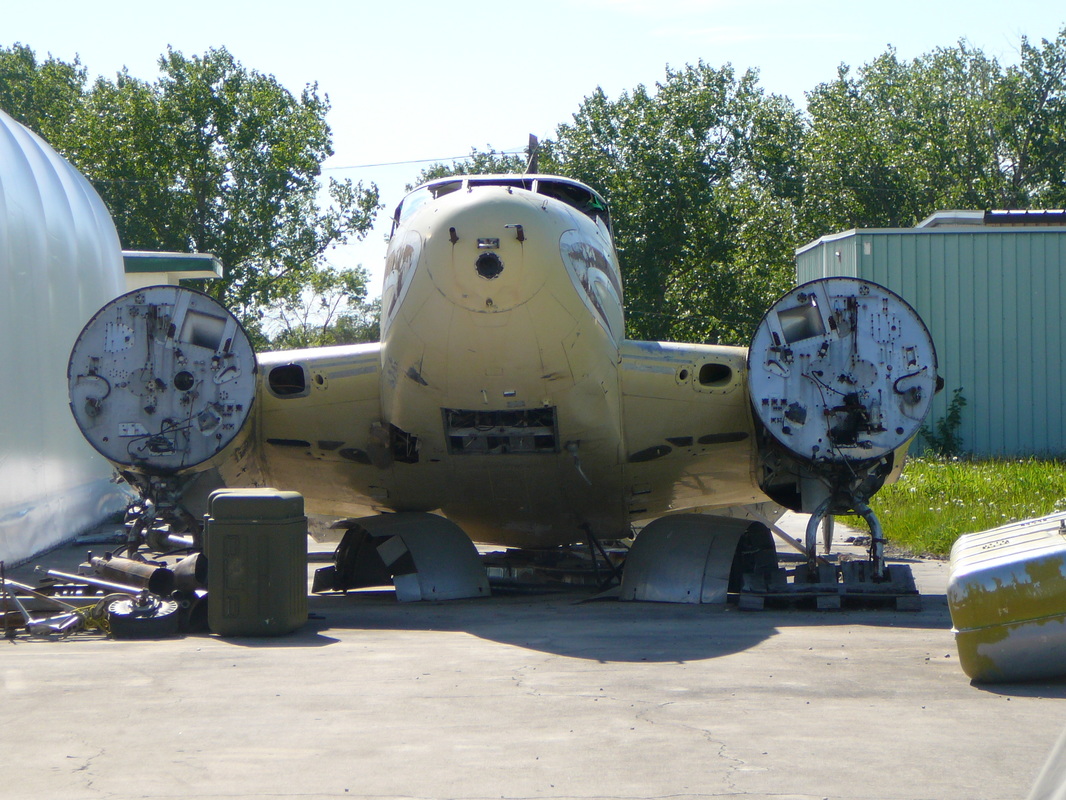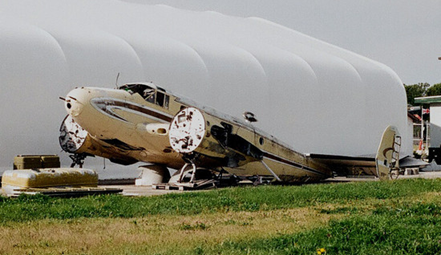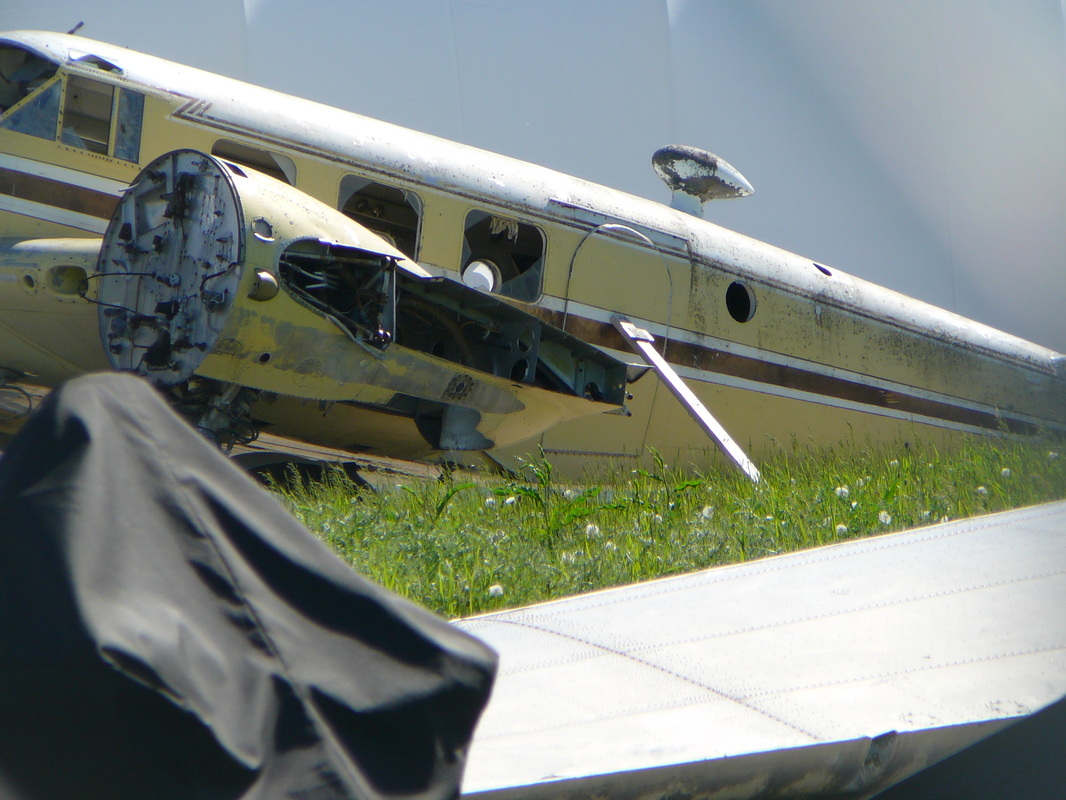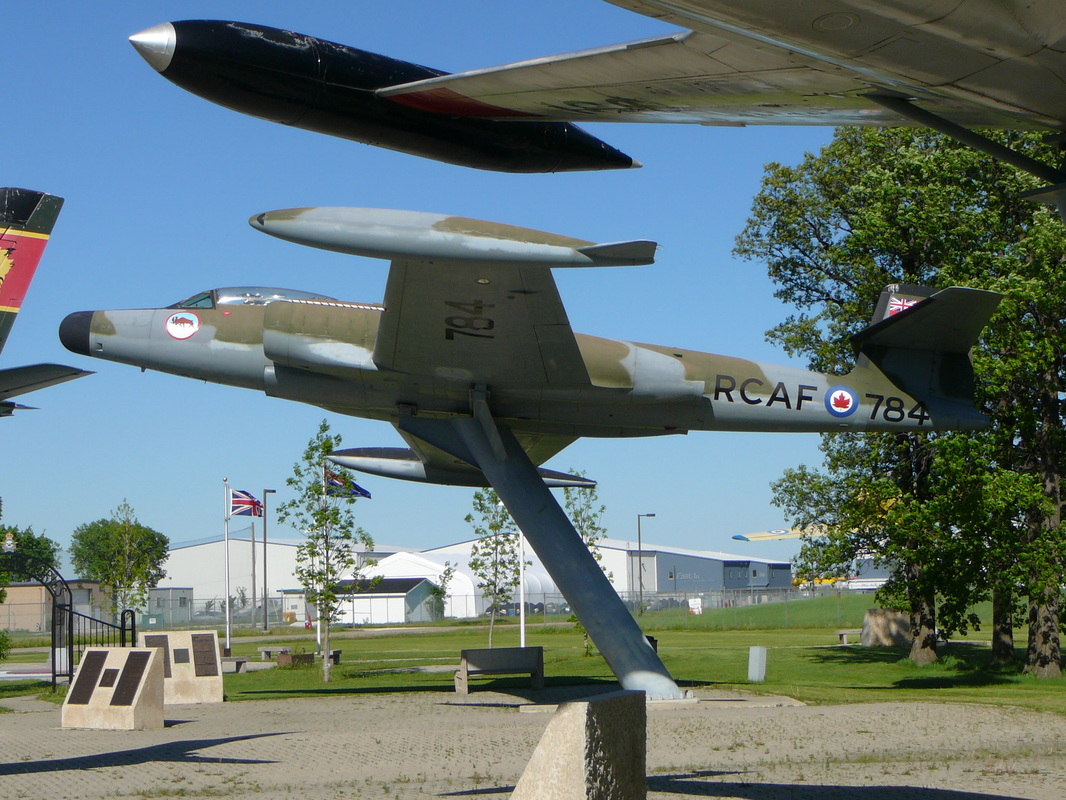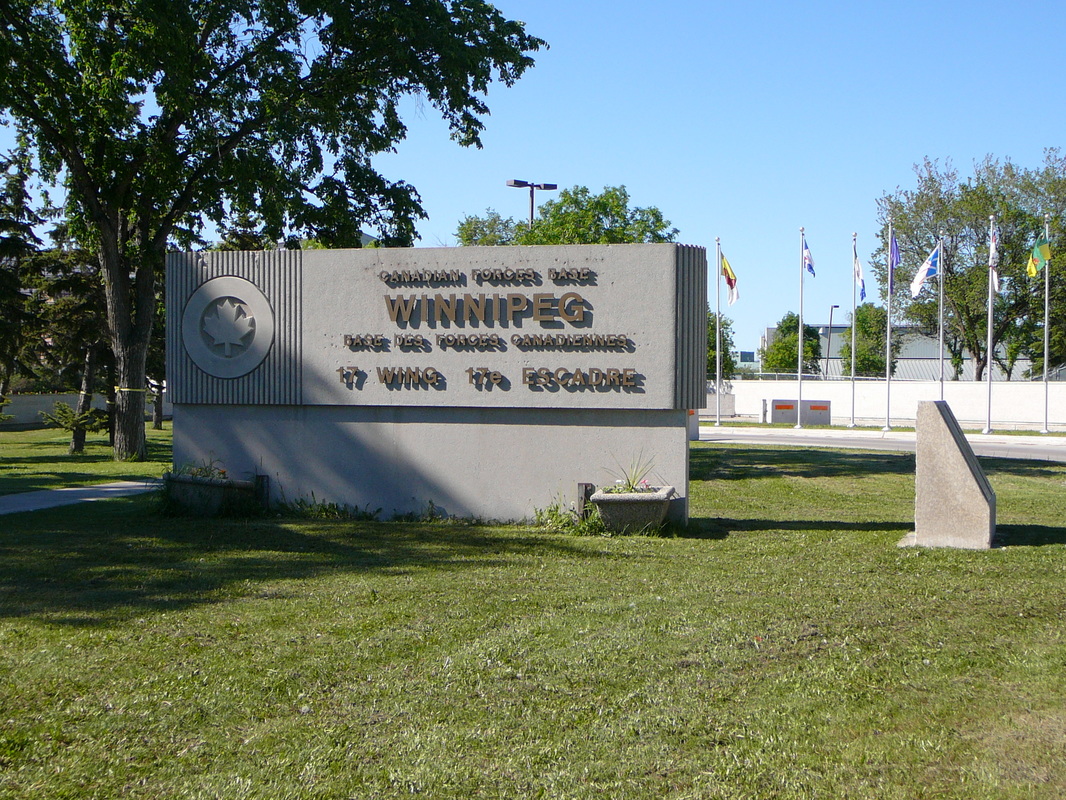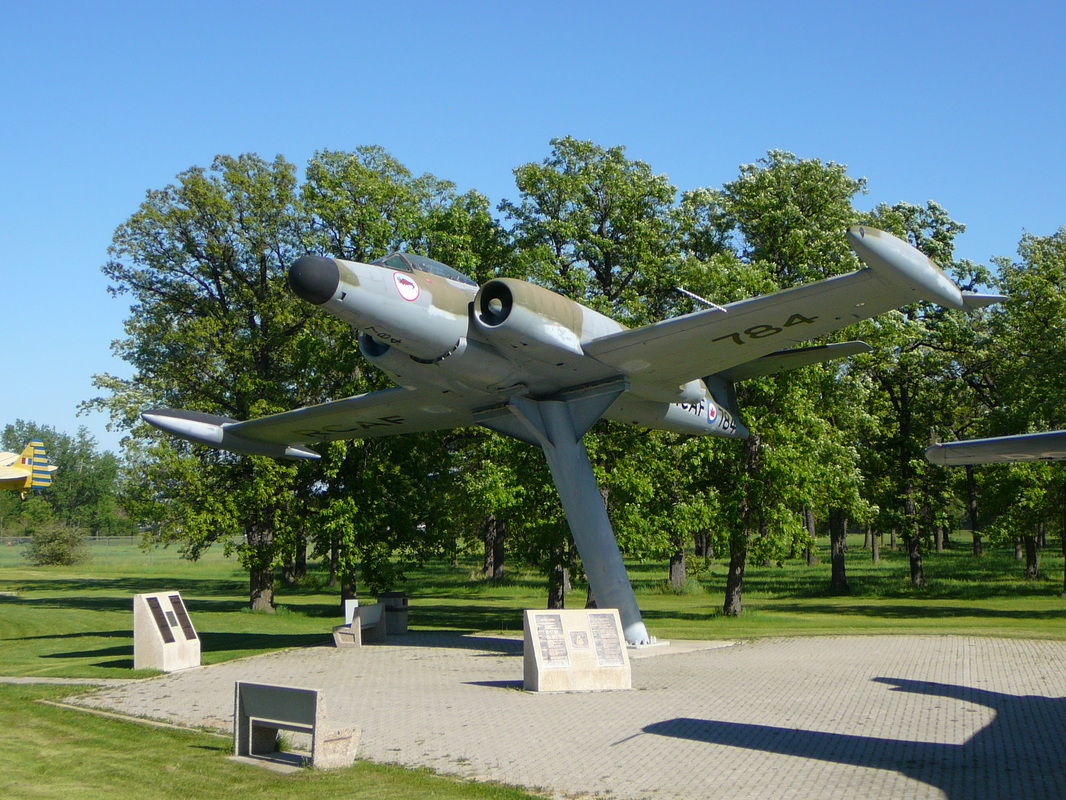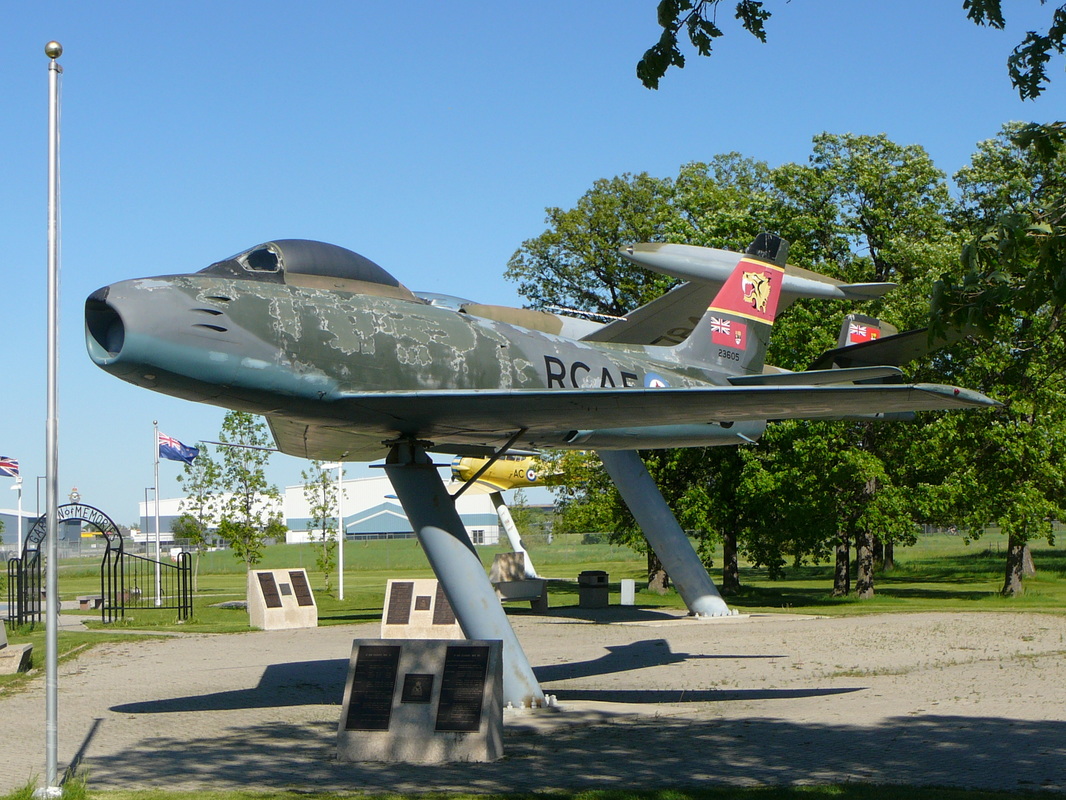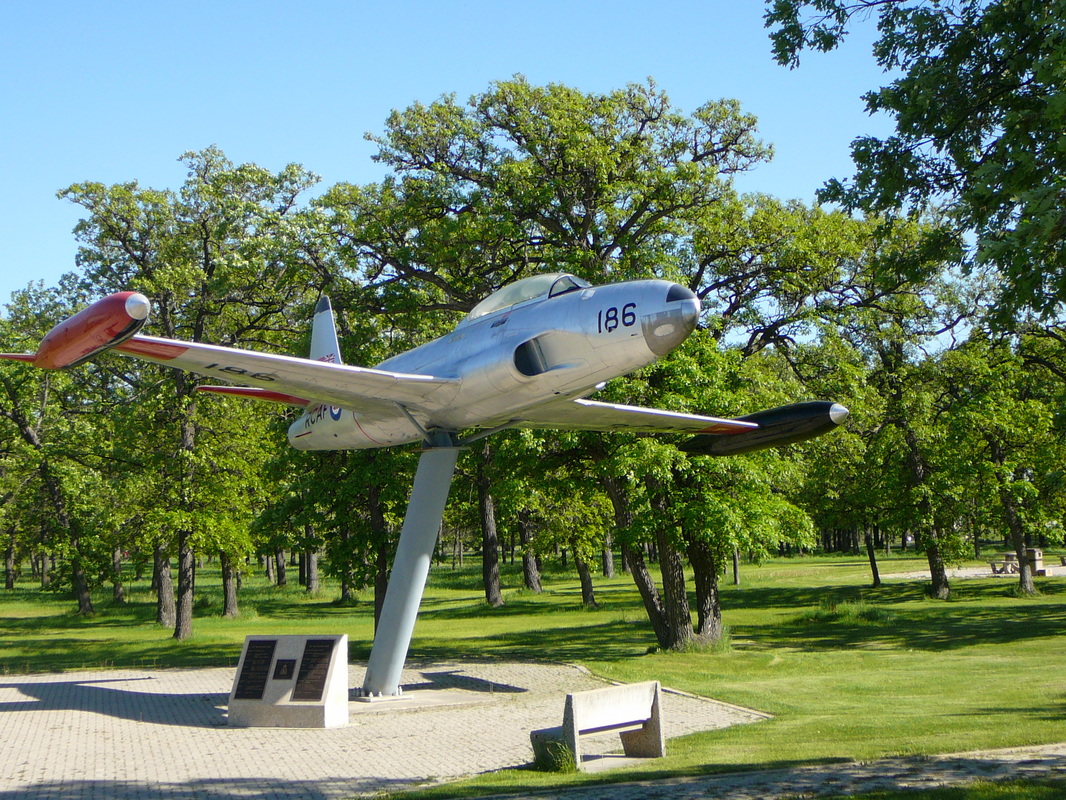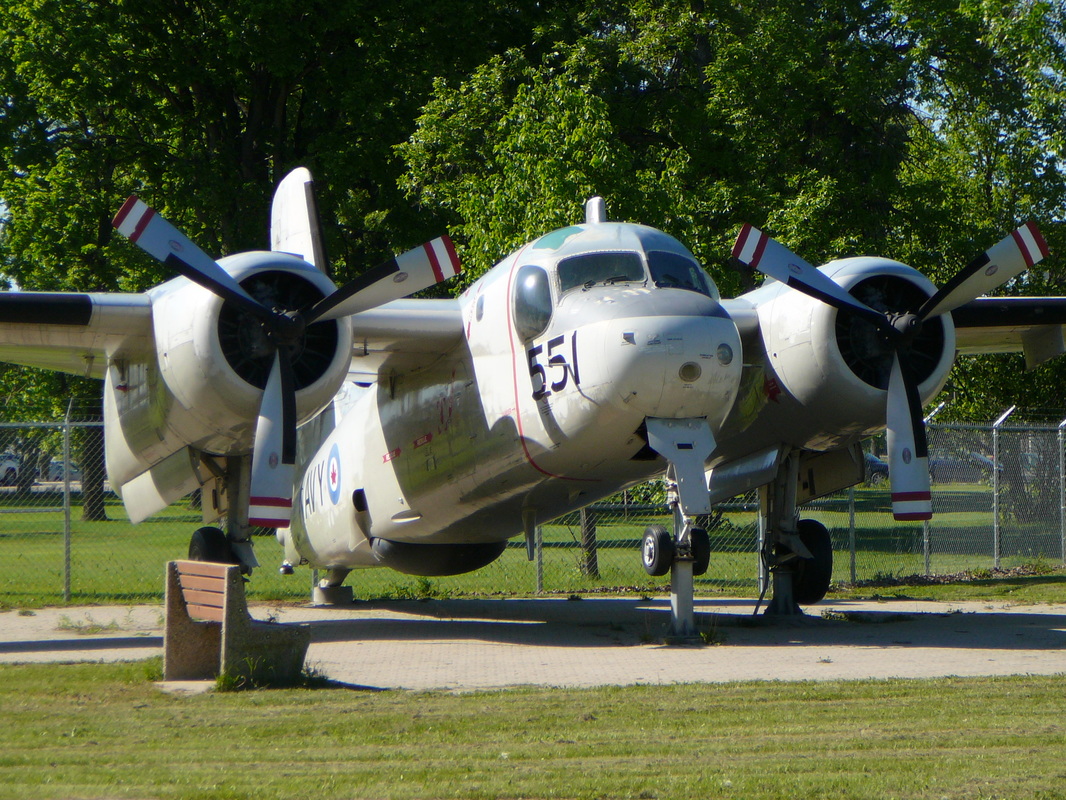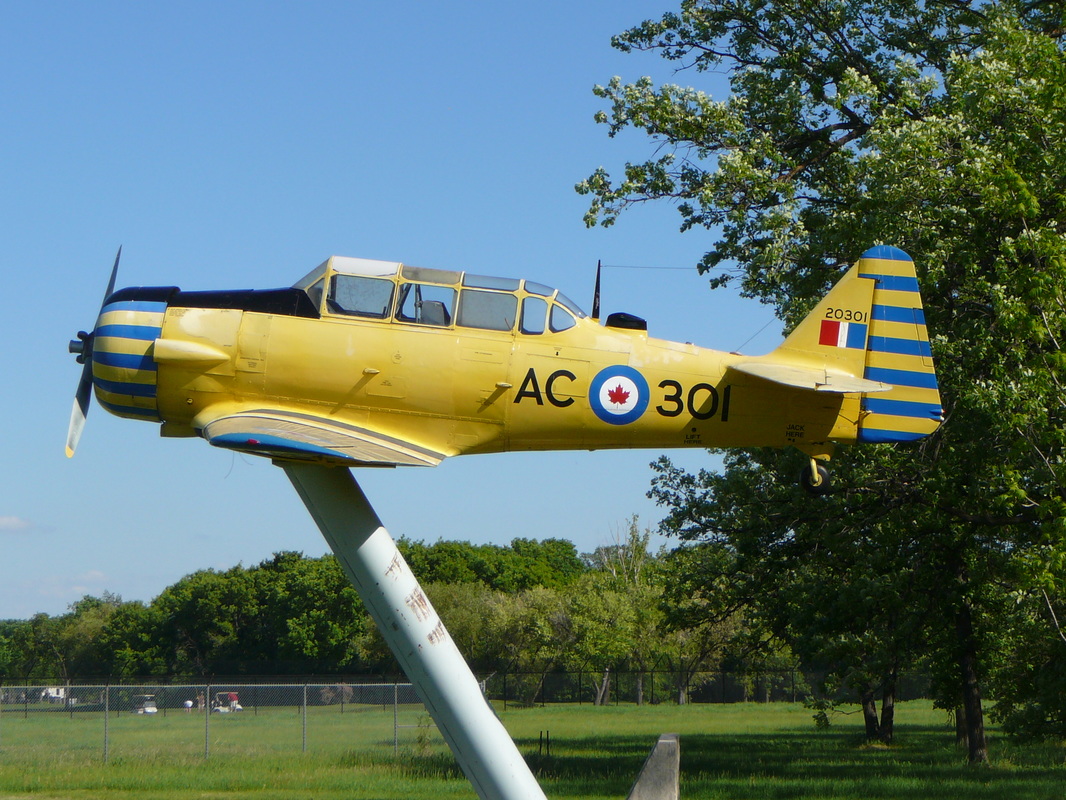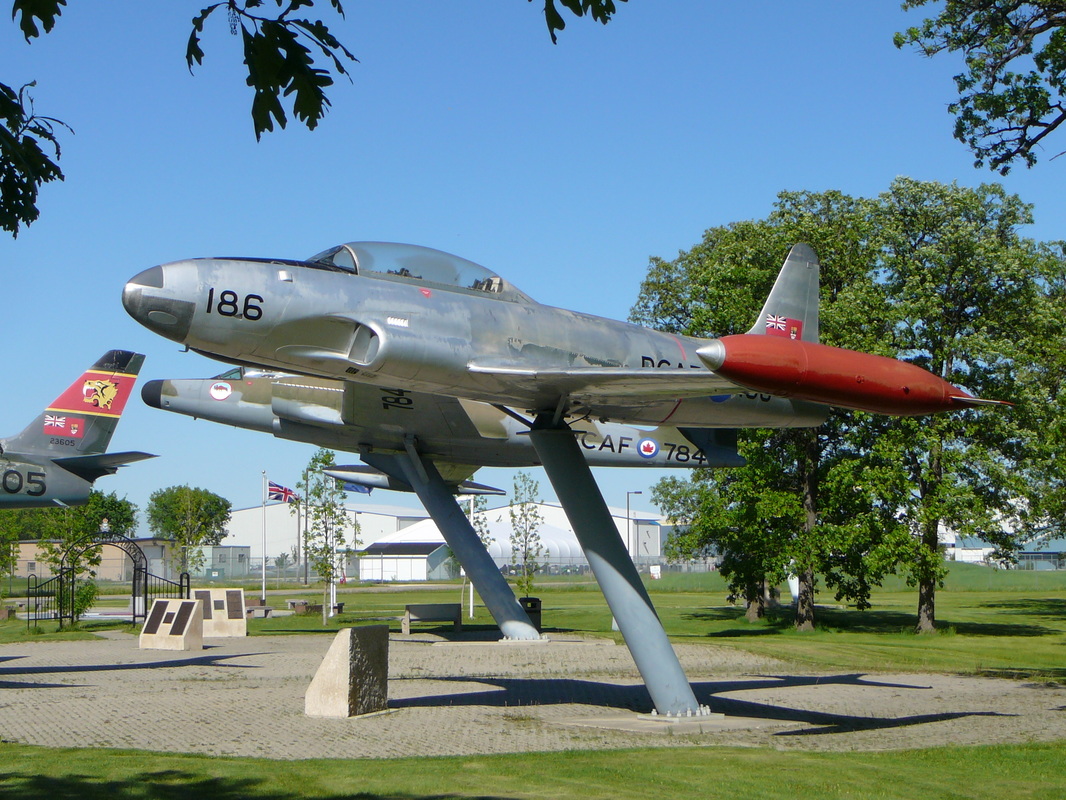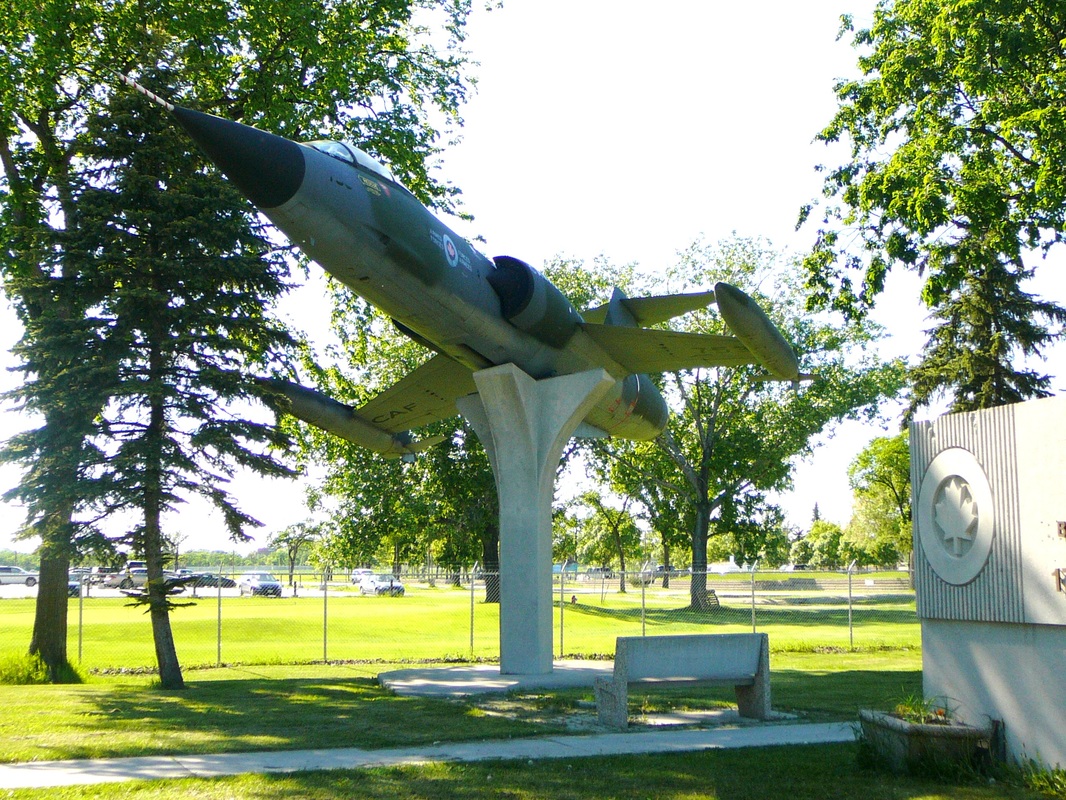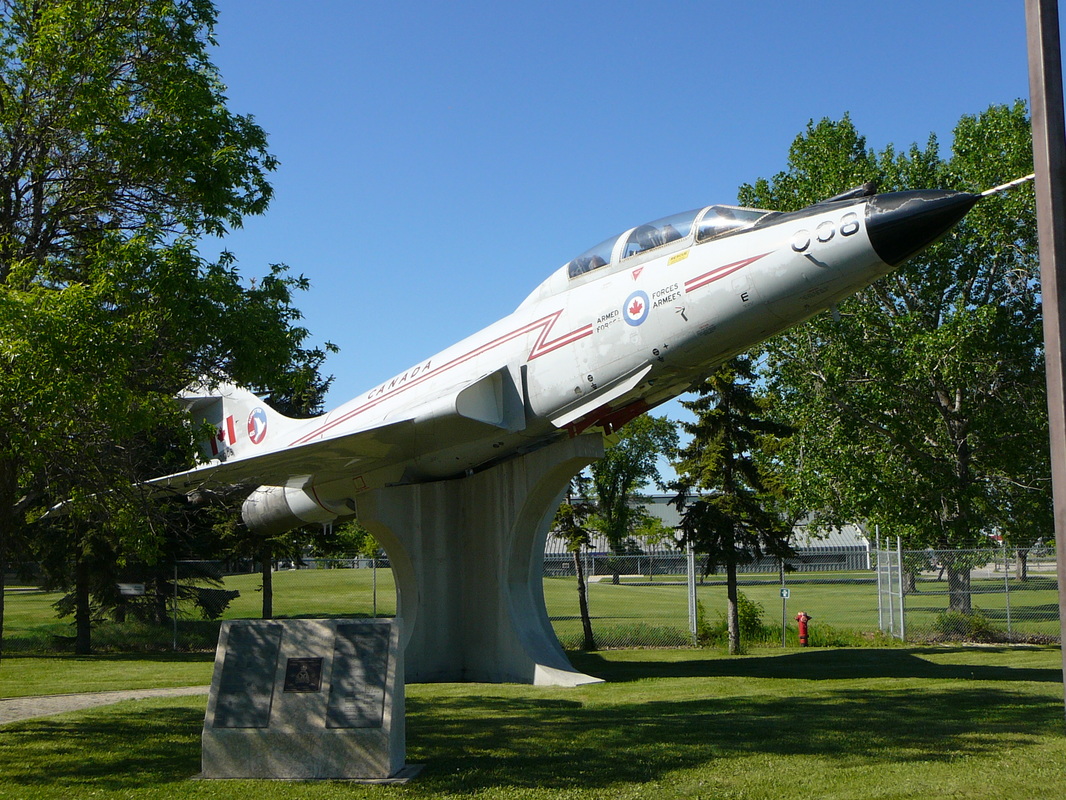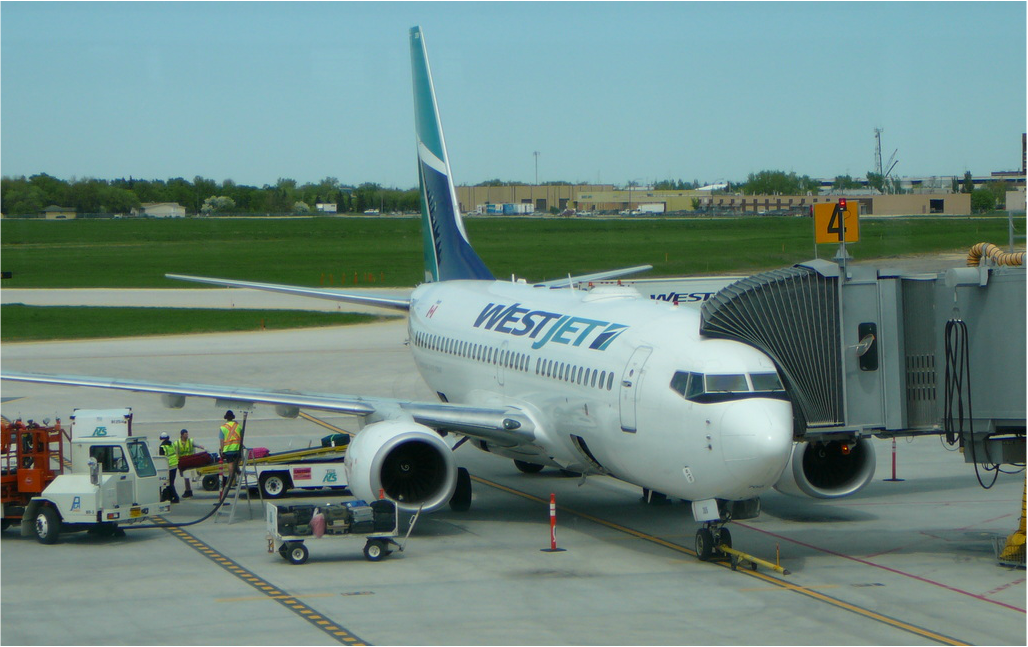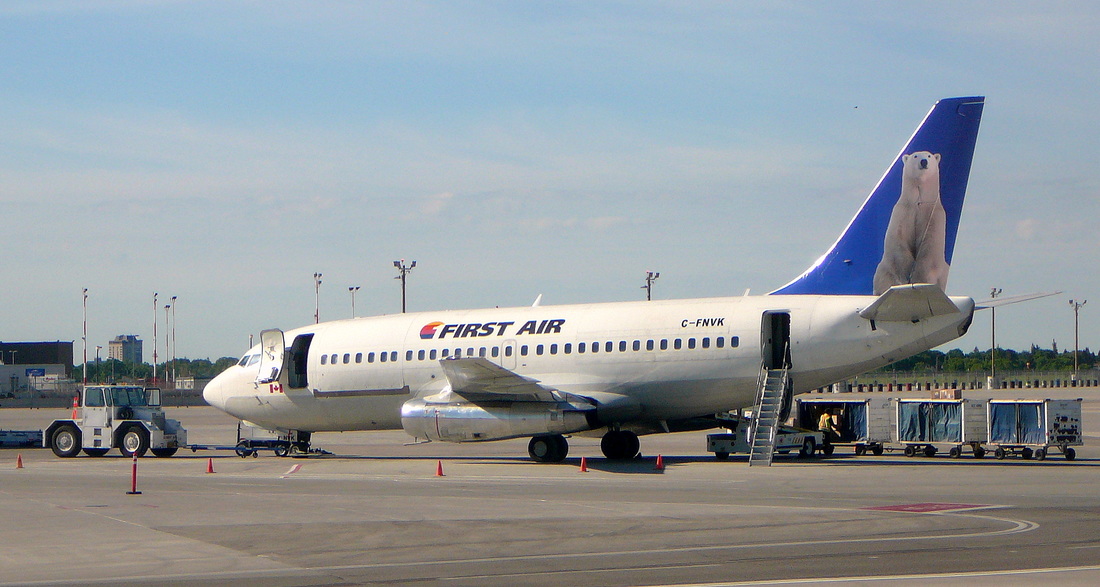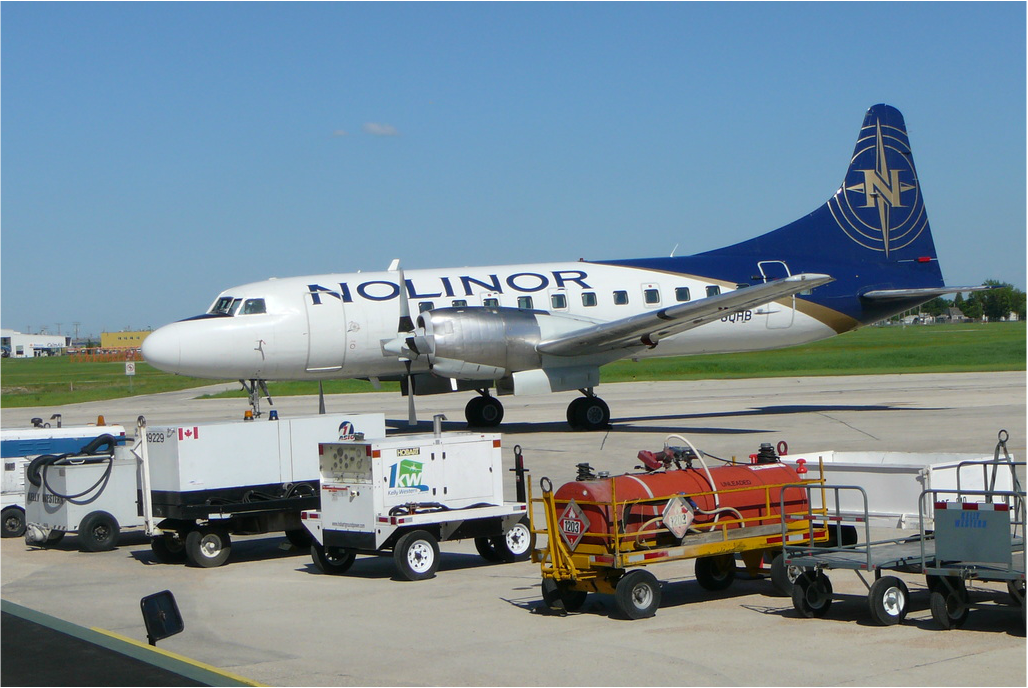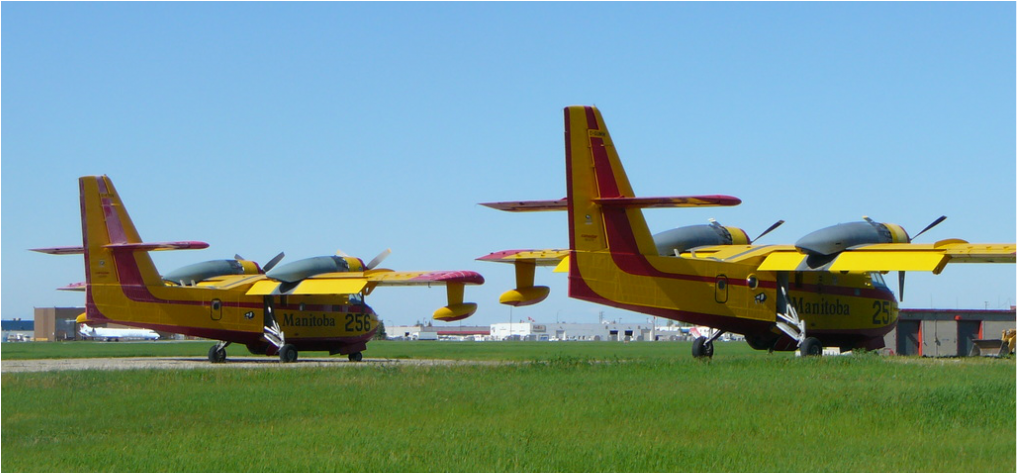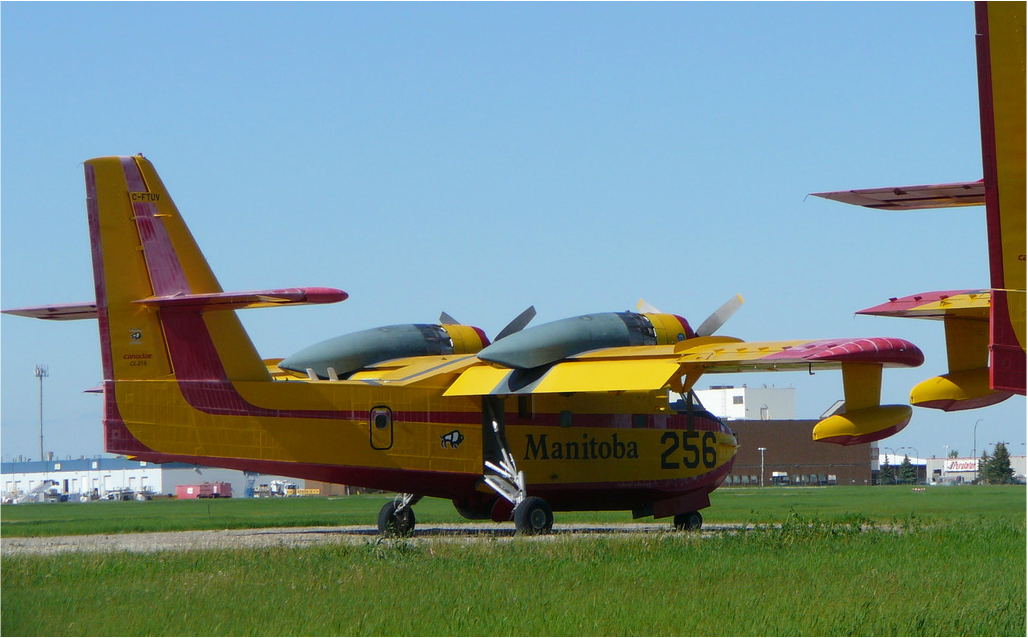Winnipeg
|
Western Aviation Museum
The Western Canada Aviation Museum This pleasant little museum sits on the south side of Winnipeg airport. We visited on a quiet Saturday afternoon and took some pictures of its collection such as the: Norcan-Air Bristol Freighter, Air Canada Vickers Viscount, the original Junkers JU52-1M and of course a DHC-2 Beaver! |
|
CF-PJD
Beechcraft D18S CF-PJD was imported in 1963 into Canada. It passed into the hands of the Western Canada Aviation Museum in 1980 and was seen in open storage in dilapidated condition at Winnipeg in June 2013. The other Beechcraft 18 is CF-AMY. I found the following information on the net via several sources: CF-PJD was one of 1,035 model D18S produced after WW II. She was manufactured in 1947 with construction number A-380 and received registration NC90515. In 1963 she was sold to Glenn Lemaster Aerial Spraying of Kansas. That same year she was exported to Canada and serviced G.R. Carter of Hay River, Pacific Western Airlines, Northward Aviation Ltd and finally Hooker Air Service of Sioux Lookout. It seems that ‘PJD’ had a very nice plush executive interior for the day. CF-PJD ground looped at Sioux Lookout July 1971. It passed into the hands of the Western Canada Aviation Museum in 1980. She was part of a trade from the Western Canada Aviation Museum in return for moving a Fairchild Husky from Whitehorse and a deHavilland Dragon Rapide on floats from Prince Rupert to Winnipeg. The aircraft is now sitting in a dismantled state in a storage yard at the north end of Sharpe Boulevard at Winnipeg airport. |
|
CF-AMY
CF-AMY was a D18S manufactured in 1946 with construction number A-46 and received registration NC44639 and operated until 1955 for the State of Illinois. This D18S was even used by Governor Adlai Stevenson to run against Eisenhauer in the 1947 elections down south. In the mid 1950s she was registrated N777V and in 1958 she was exported to Canada as CF-AMY. She operated for Automotive Products, Flite Finance Corp. and Atlas Aviation. In 1998 her fuselage was bought by Mr. Paul Kroeker. It passed into the hands of the Western Canada Aviation Museum in 1980. |
Heritage Park
|
Heritage Park
Winnipeg – RCAF 17 Wing Heritage Park During a quick drive through the park we saw the following aircraft’s on display: Grumman Tracker 1551, Harvard 20301, Starfighter 753, Voodoo 008, Sabre 23605, T33 133186, Avro CF100 100784 and Beech CT134 123228. Next to the Heritage park was a RCAF restoration compound where I noted two Beech 18s; CF-PJD and CF-AMY were outside in the grass in poor condition. Avro Canada CF-100 Canuck The Avro Canada CF-100 Canuck (affectionately known as the "Clunk") was a Canadian jet interceptor/fighter serving during the Cold War both in NATO bases in Europe and as part of NORAD. The CF-100 was the only Canadian-designed fighter to enter mass production, serving primarily with the RCAF/CAF and in small numbers in Belgium. For its day, the CF-100 featured a short takeoff run and high climb rate, making it well suited to its role as an interceptor. In the early 1950s, Canada needed an all-weather interceptor (fighter) able to patrol the vast areas of Canada's north and operate in all weather conditions. The two-seat fighter crewed by a pilot and navigator was designed with two powerful engines and an advanced radar and fire control system housed in its nose that enabled it to fly in all-weather or night conditions. Design of the XC-100 to meet a Royal Canadian Air Force (RCAF) specification for an all-weather fighter was initiated at Avro Canada in October 1946. Chief Engineer Edgar Atkin's work on the CF-100 was subsequently passed to John Frost (formerly of de Havilland) who, along with Avro's Chief AerodynamacistJim Chamberlin, reworked the original fuselage design. The CF-100 Mark 1prototype, "18101," emerged out of the factory, painted gloss black overall with white lightning bolts running down the fuselage and engines. The CF-100 prototype flew its maiden flight on 19 January 1950 with Gloster AircraftCompany Chief Test Pilot Squadron Leader Bill Waterton at the controls. Waterton was on loan from the Gloster firm, another member of the Hawker Siddeley Group, and chosen because of his experience with jet aircraft development, as one of the "highest-time" pilots in the world.[1] The Mark 1 was powered by two Avon RA 3 turbojets with 28.9 kN (2,950 kgp / 6,500 lbf) thrust each. The second prototype, 18102, was also powered by Rolls-Royce Avons, although subsequent pre-production and production series aircraft used the Avro Orendaturbojet. Five pre-production Mk 2 test aircraft were produced (18103-18107) all fitted with the Orenda 2 jet engines; one was fitted with dual controls and designated a Mk 2T trainer. The first production version, designated Mk 3, incorporated the APG-33 radar and was armed with eight .50 caliber (12.7 mm)machine guns. The Mk 3CT and Mk 3DT were again dual control versions supplied to operational training units. A CF-100 arrived at Eglin AFB, Florida, in mid-January 1955 for cold-weather tests in the climatic hangar. A seven-man RCAF team, headed by Flight Lieutenant B. D. Darling, which had previously conducted tests at Namao Air Base, Alberta, were part of the climatic detachment of Central Experimental and Proving Establishment. Tests were to begin in February. In March 1956, four CF-100 Canucks were sent to Eglin AFB for comparative armament trials, and flown by USAF crews.[3] The operational suitability tests, dubbed Project Banana Belt, were carried out by the 3241st Test Group (Interceptor) of the APGC's Air Force Operational Test Center, in conjunction with a project team from the Royal Canadian Air Force.[4] In September 1950, the RCAF ordered 124 examples of the Mk 3 version, the first of these entering service in 1953. These were armed with eight .50-caliber machine guns. The definitive version rocket-armed Mk 4A was based on prototype Mk 4 (a modified Mk 3) first flying on 11 October 1952. The nose housed the much larger APG-40 radar with wingtip pods each containing up to 29 Mighty Mouse FFAR (folding fin aerial rockets) in addition to the guns. As the last 54 of an order for the Mk 3 were changed into the Mk 4 in 1954, total orders for the Mk.4 rose to 510. The Mk 4B version had more powerful Orenda 11s. Five versions, or "marks", were produced, ending, from 1955 onwards, with the high-altitude Mk 5 that featured a 1.06m (3 ft. 6 in.) extended wingtip and enlarged tailplane, along with removal of the machine guns. The proposed Mk 6was to have mounted Sparrow II missiles and been powered by afterburning Orenda 11IR engines in an effort to provide an "interim" fighter prior to the introduction of the Avro CF-105 Arrow. A projected transonic swept-wing CF-103 was built in mock-up form in 1951, but was considered obsolescent even before the CF-100's demonstrated ability to exceed the speed of sound in a dive. On 18 December 1952, S/L Janusz Żurakowski, the Avro company chief development test pilot, took the CF-100 Mk 4 prototype to Mach 1.0 in a dive from 30,000 ft. being the first straight-winged jet aircraft to achieve controlled supersonic flight.[5] The Canuck was affectionately known in the RCAF as the "Clunk" because of the noise the front landing gear made as it retracted into its well after takeoff. Its less-attractive nickname was the "Lead Sled", a reference to its heavy controls and general lack of maneuverability, a nickname it shared with a number of other 1950s aircraft.[6] Others included CF-Zero, the Zilch, the Beast, all references to an aircraft many pilots considered less glamourous than RCAF day fighters like the Canadair Sabre. The aircraft operated under the US/Canadian North American Air Defense Command (NORAD) to protect North American airspace from Soviet intruders such as nuclear-armed bombers. Additionally, as part of the North Atlantic Treaty Organization (NATO), four Canuck squadrons were based in Europe with1 Air Division from 1956–1962, and were for some time the only NATO fighters capable of operating in zero visibility and poor weather conditions. When the Korean War started, the USAF was in urgent need of a jet-propelled, all-weather, interdiction/surveillance aircraft. The urgency was so great that the USAF was willing to consider two foreign designs: the CF-100 and the English Electric Canberra. The CF-100 was rejected because of insufficient range andpayload. The English Electric design was selected and developed into the B-57 Canberra. The CF-100 served with nine RCAF squadrons at its peak in the mid-1950s. Four of these squadrons were deployed to Europe from late 1956–1962 under the NIMBLE BAT ferry program, replacing some NATO RCAF squadrons equipped with Canadair Sabre day fighters to provide all-weather defense against Soviet intruders. Canucks flying at home retained natural metal finish, but those flying overseas were given a British-style disruptive camouflage scheme - dark sea gray and green on top, light sea gray on the bottom. During his Avro Canada years, the Chief Development Pilot, S/L Żurakowski, continued to fly as an aerobatic display pilot, with spectacular results, especially at the 1955 Farnborough Airshow where he displayed the CF-100 in a "falling-leaf." He was acclaimed again as the "Great Żura" by many aviation and industry observers who could not believe a large, all-weather fighter could be put through its paces so spectacularly. His performance led to Belgium purchasing the CF-100. In its lifetime, 692 CF-100s of different variants were produced, including 53 aircraft delivered to the Belgian Air Force. Although originally designed for only 2,000 hours, it was found that the Canuck's airframe could serve for over 20,000 hours before retirement. Consequently, though it was replaced in its front line role by the CF-101 Voodoo, the Canuck served with 414 Squadron of the Canadian Forces at CFB North Bay, Ontario, until 1981, in reconnaissance, training and electronic warfare roles. After the CF-100 was retired, a number of aircraft still remain across Canada (and elsewhere) as static displays. Its planned successor, the CF-105 Arrow along with the sophisticated Orenda Iroquois engine, both Canadian-designed, were cancelled in 1959 in a controversial decision by the Canadian government. |
|
|
|
